Arthur Harold Kitchener Prosser
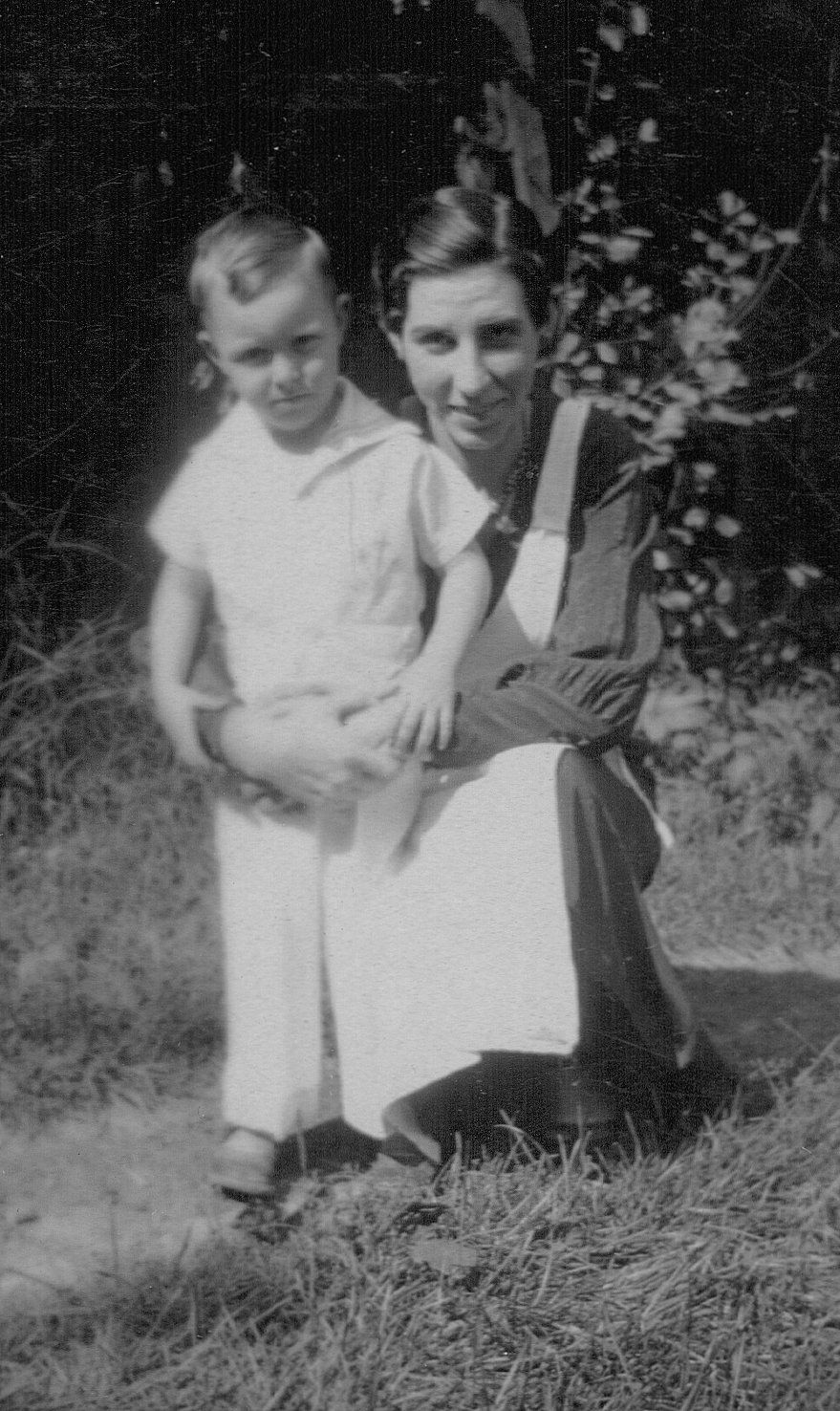
My dad was one of those people with a BIG personality. Most people either loved him or, well, not. He never sat quietly in a room and was always the life of any party.
Arthur Harold Kitchener Prosser was born June 27, 1929, to Harold Prosser and Edna Forth, just a few months before the world fell apart due to the Great Wall Street Crash and entered the depression of the thirties.
Dad was always called Art unless someone was exasperated with him. He was proud of his second middle name but rarely used it. The name lives on in my nephew. The
Kitchener
name ran deep in Dad’s family.
Horatio Herbert Kitchener, 1st Earl Kitchener, known as Lord Kitchener, had been named Secretary of the State for War to the British Cabinet in 1914. He had gained considerable attention during the Boer War and was instrumental in soldier recruitment in Britain at the beginning of the First World War. Kitchener died in June of 1915 when a ship he was sailing on hit a German mine. My gran’s youngest brother was born in November of 1915 and was named Roy Kitchener Forth. I am sure the Forth family felt strongly that Lord Kitchener was a hero to be admired. The six eldest of the Forth sons enlisted in the Canadian Army and proudly went off to fight the Germans in WWI. The irony of this was that their father was German. Roy enlisted in WWII and lost his life while on a flying mission. Four years later, my great aunt Grace named her son Roy Kitchener, in memory of her brother I am sure.
Dad was born in St. Catharines. His dad, Harold, worked at the time as a labourer on the Welland Canal. Two years later, Dad’s younger sister, Irene, was born. While I shall call her Aunt Irene here, she was always known to the family as Toots, a nickname given to her by her dad. I was in Grade Eight when I discovered her real name was not Toots or Tootsie as Gran sometimes called her!
This photo shows Aunt Irene and Dad holding their first cousin, Charles (Chuck) Poytress, son of Gran’s younger sister, Mabel. The photo was taken likely in August of 1932 as Chuck was born in May. My guess is that this photo was taken during a picnic to Niagara Falls, likely on a family visit.
When work on the Welland Canal ceased due to the depression, the family moved to Ravenshoe to help on the farm of my grandfather’s friend and boss, John Gordon. John had bought a farm across the road from his brother, Carl, and needed help to run it. So, off the family went to the Ravenshoe area.
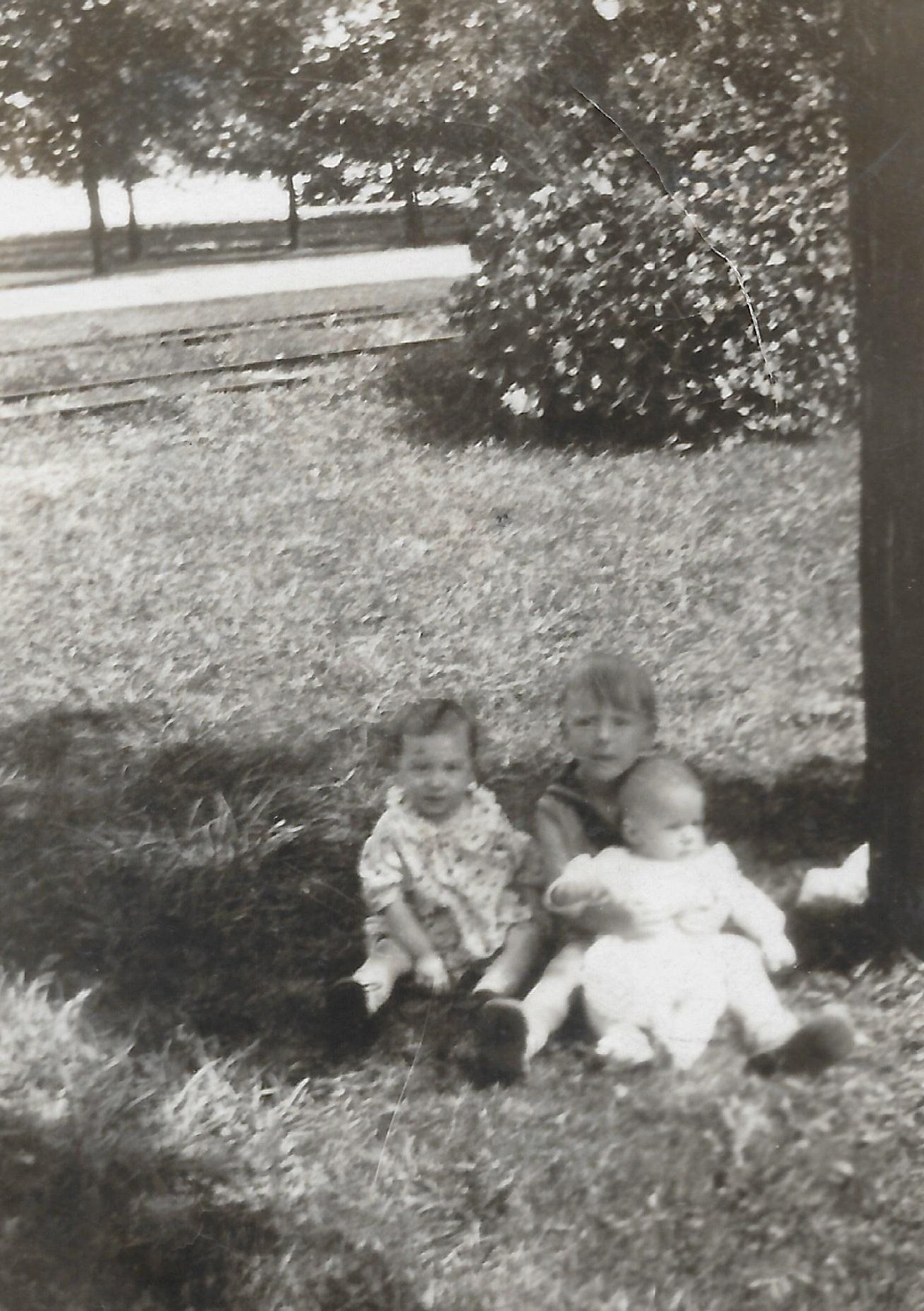
Poppa and Gran spent the first year working for the Gordons and then worked for other farms in the area, eventually moving into the town of Ravenshoe. Dad had great stories to tell about the time he spent in the Ravenshoe area. He told me that to try to make ends meet, his mother used to bake and sell pies and bread to the tourists who visited the area on the weekends – just like her mother had done in Muskoka. Gran and Poppa would fill up Poppa’s old car with the baked goods and drive around to sell them. In the photo below, it looks like Aunt Irene wanted to help too – or maybe it was a birthday cake for her!
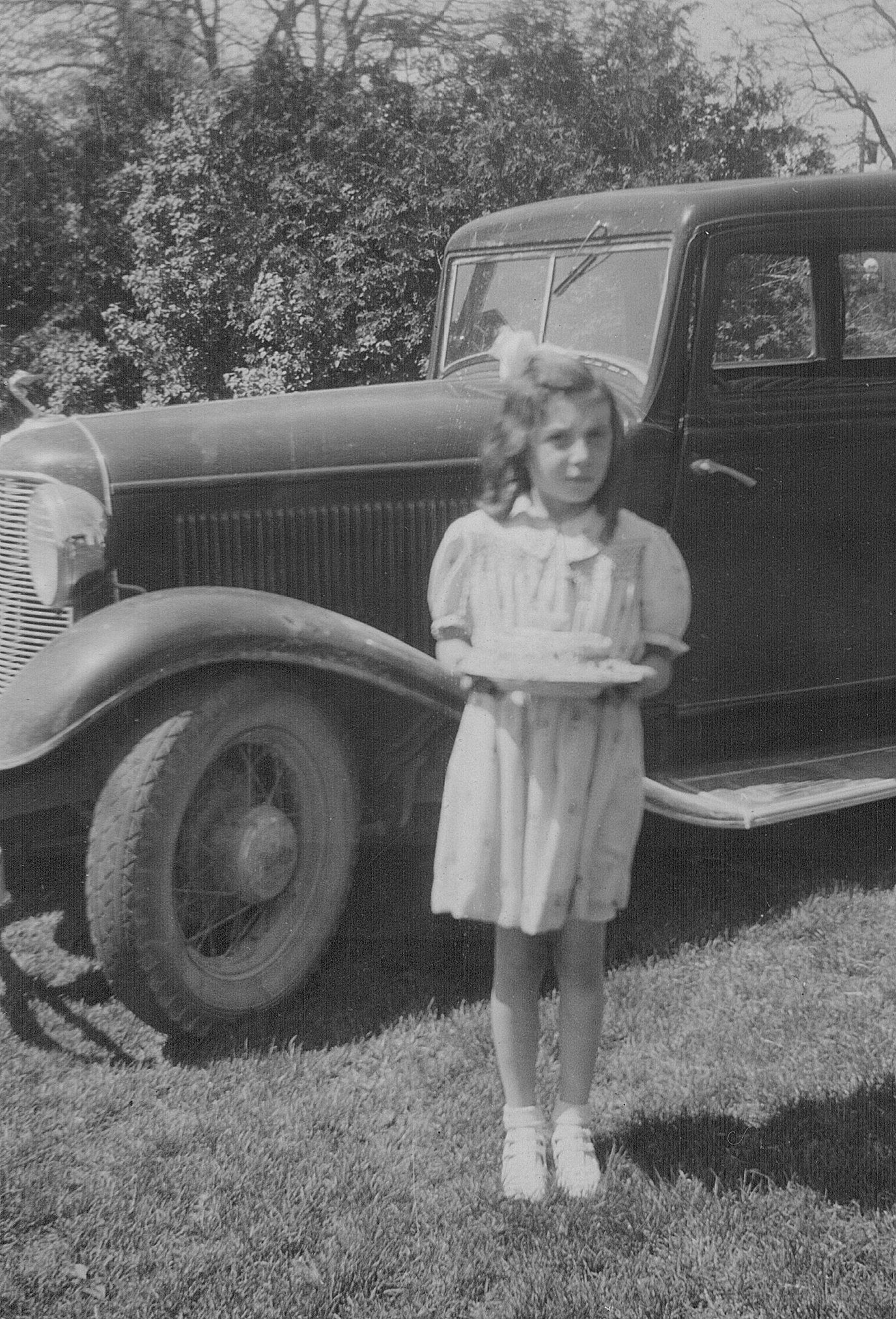
Aunt Irene
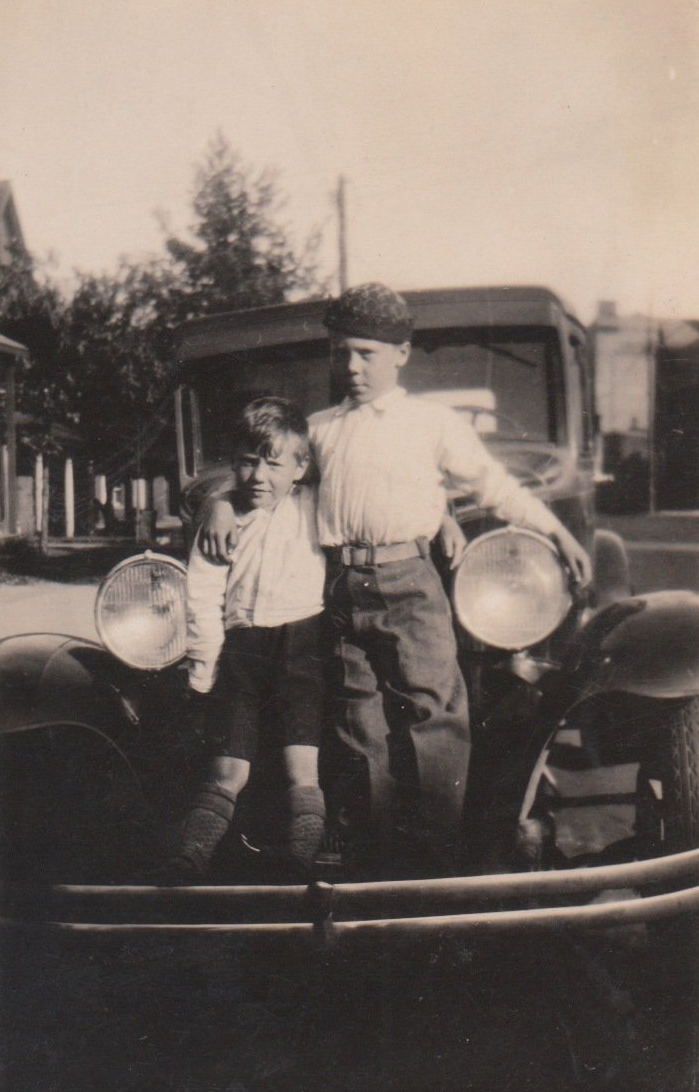
Dad (left) and Ivan Gordon, Carl's son, standing
on Poppa's car.
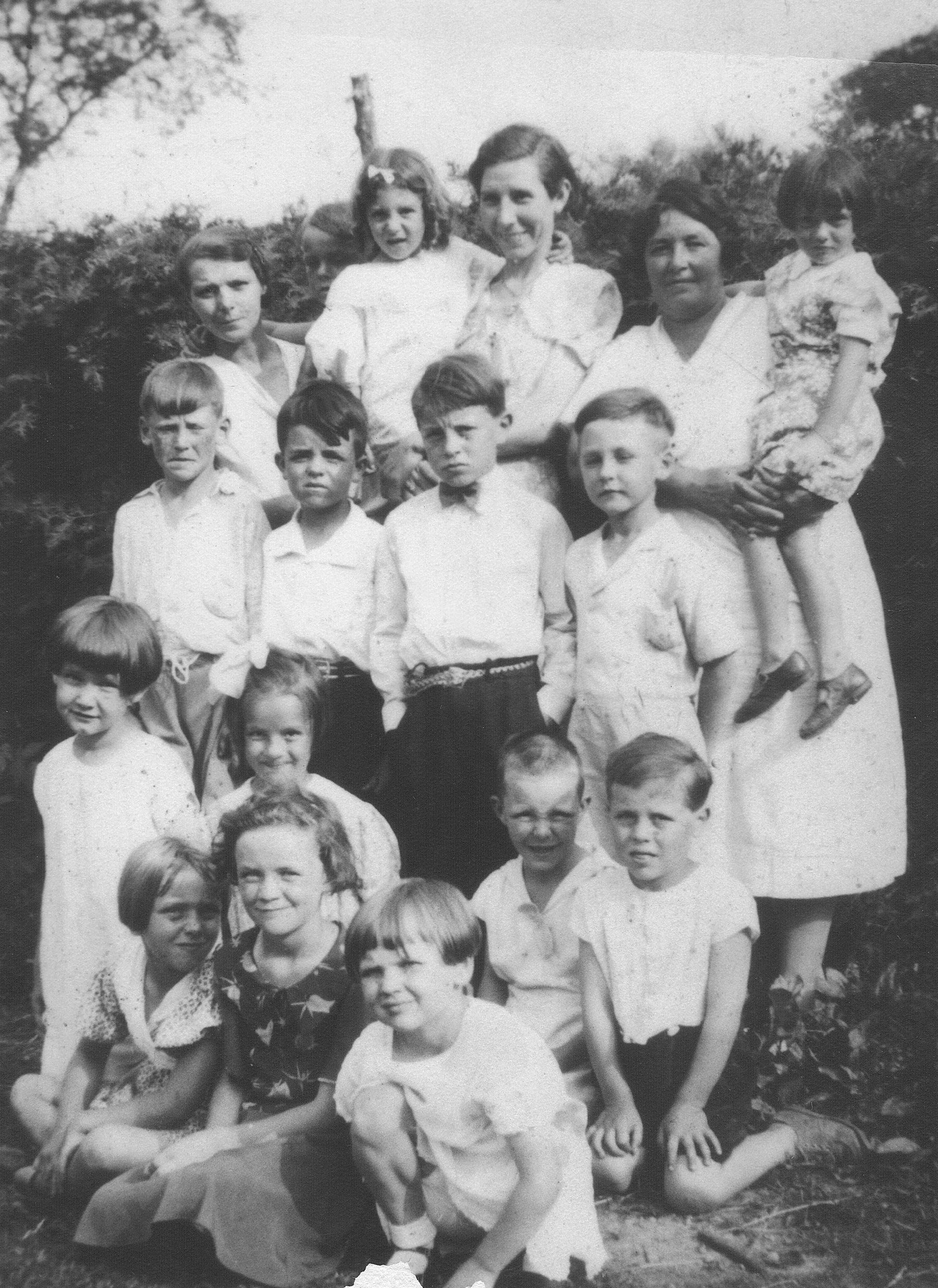
Sunday School Picnic c. 1935. Back centre is Gran holding Aunt Irene and Dad is in the second row from the front, second from the right.

Dad in early school photo
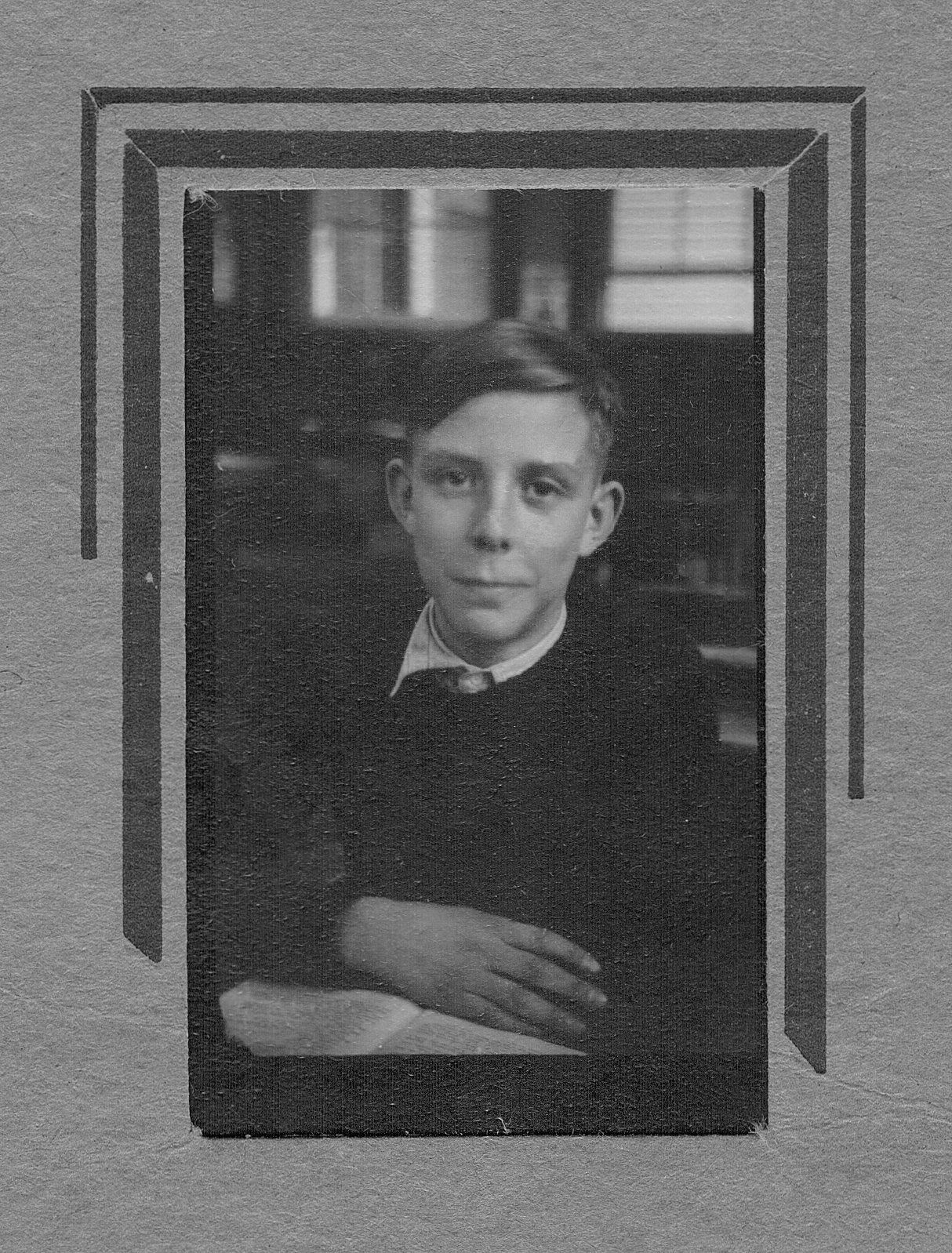
Dad in later school photo
After Dad died, I found in his effects a 1992 letter and photo from his Grade Three teacher at Ravenshoe Public School. The teacher, Blanche Banks, and my dad had sent Christmas cards to each other for years! In this card, his teacher had sent a photocopy of a class photo totally labelled. It was a multi-grade class, as most small town schools were, and both my dad and aunt Irene were in the photo. What surprised me was that my aunt Irene was listed by the teacher on the photo as Toots Prosser. I guess her nickname was used by more than just the family in her early years.
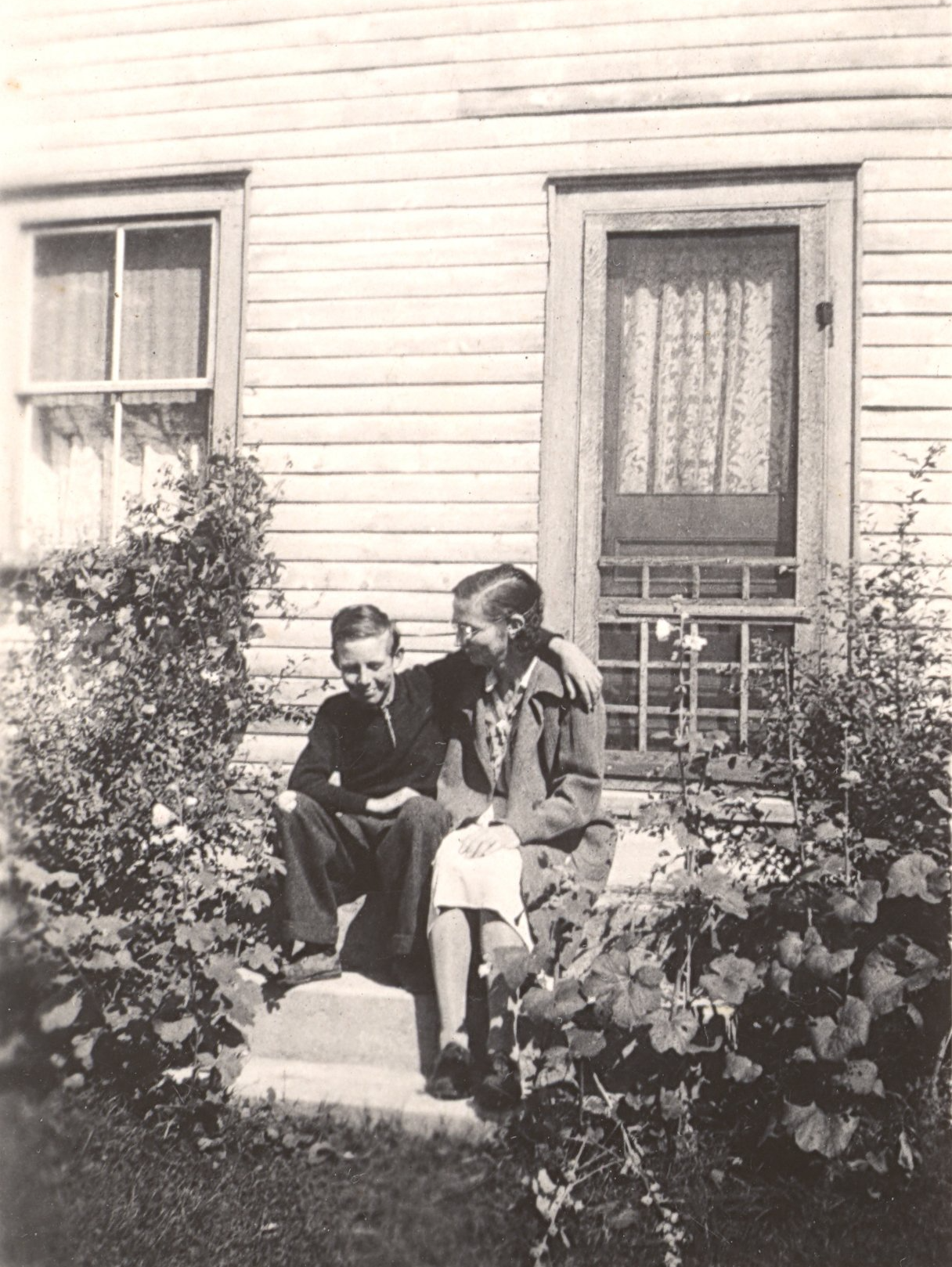
Dad and Gran in Ravenshoe
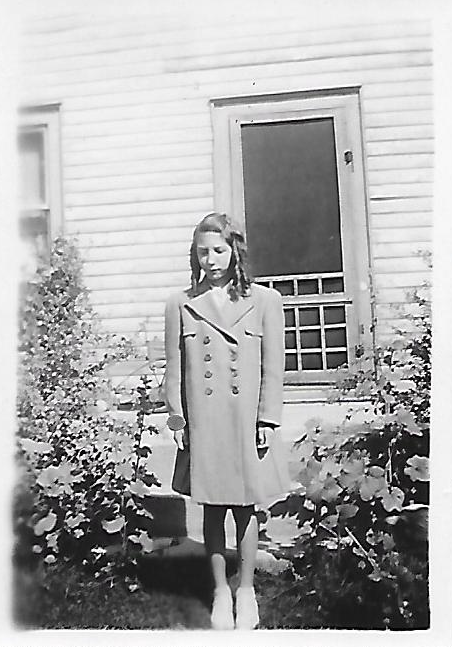
Aunt Irene in Ravenshoe
One of Dad's fondest memories of living on a farm was the fun he and my aunt Irene had playing with the donkey. In the winter, they would tie the donkey to a sleigh and take it down to the end of the lane which led up to the farm. They would then climb on the sleigh and yell at the donkey to go home. The donkey would head down the lane hell bent for leather, towing the sleigh and giving them the ride of their lives - times were tough in the depression and this was cheap fun!
Indeed, life during a depression WAS very difficult. Aunt Irene was raised for a number of years by Stan and Gertie Armstrong, a childless couple who lived next door to my grandparents in the town of Ravenshoe. It meant one less mouth to feed and one less child to look after for my grandparents. Dad was old enough to be a help on the farm.
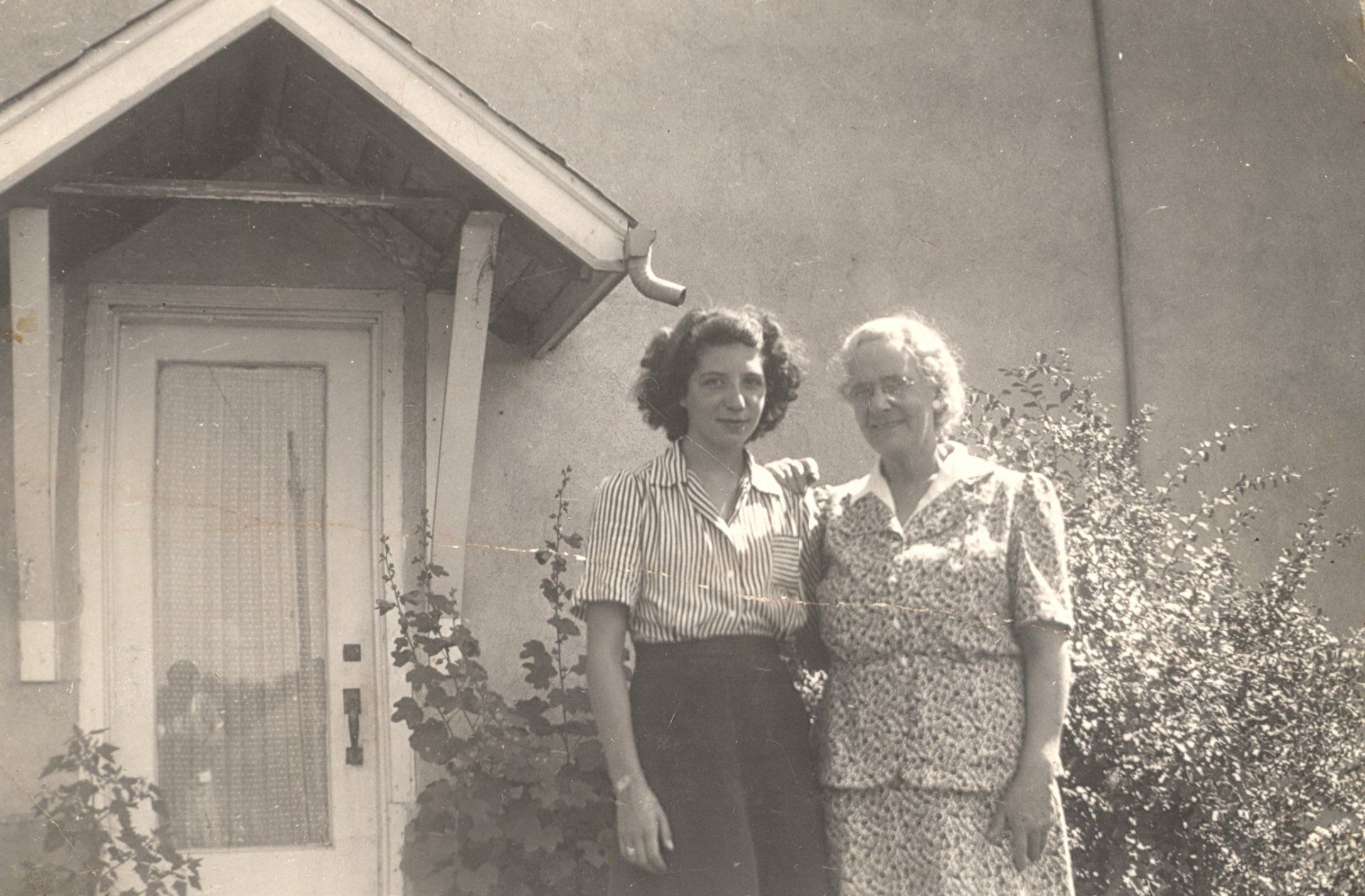
Aunt Irene and Gertie Armstrong
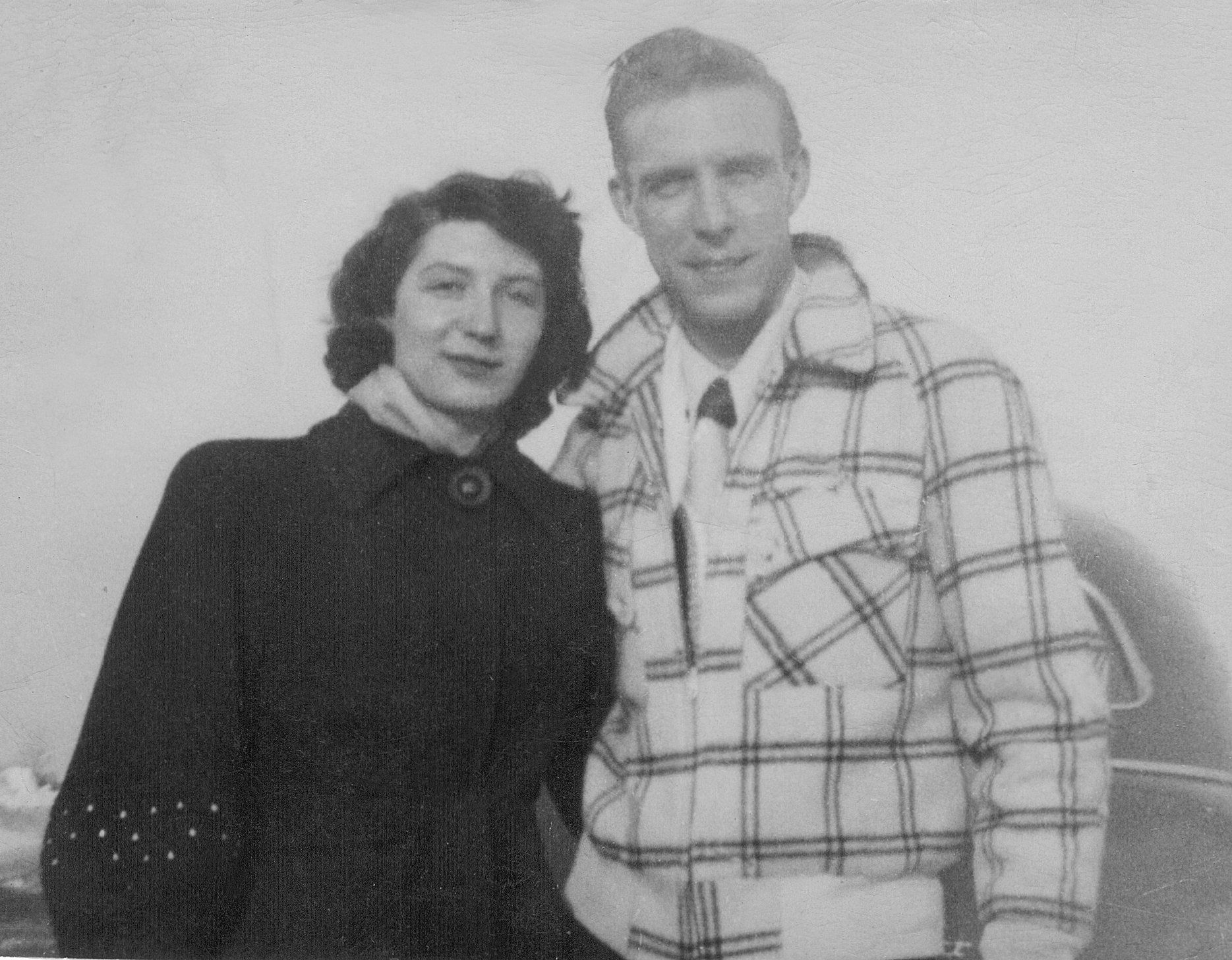
Aunt Irene and Dad
Cousin Cindy Long shared a story about her grandfather, Ed Forth, who loaded his family in the car and drove from Toronto to Ravenshoe to help my grandmother save all the tomatoes on the farm before the “big wind storm” blew in sometime in the late 1930’s. When I asked Dad about this, mere weeks before his death, he said yes he remembered that hurricane quite vividly. I remarked that I didn’t think a hurricane had hit Ontario before 1954 when we were caught in Hurrican Hazel. Dad said there was definitely a hurricane around 1937 and 1938. Always up for a Google challenge, I looked online and found this on Wikipedia!
“The 1938 New England Hurricane (also referred to as the Great New England Hurricane and the Long Island Express Hurricane) was one of the deadliest and most destructive tropical cyclones to strike Long Island, New York, and New England. The storm formed near the coast of Africa on September 9, becoming a Category 5 hurricane on the Saffir–Simpson hurricane scale, before making landfall as a Category 3 hurricane on Long Island on September 21. It is estimated that the hurricane killed 682 people, damaged or destroyed more than 57,000 homes, and caused property losses estimated at $306 million ($4.7 billion in 2017)… After moving inland, it transitioned into an extratropical cyclone and dissipated over Ontario on September 23.”
While it was not really a hurricane by the time it hit Dad’s farm, I am sure it felt like one. I rode out the end of Hurricane Earl in Newfoundland years ago as it transitioned to a tropical storm and that was sure scary enough. Dad says they saved all the tomatoes!
In 1941, the Prosser family moved to Parry Sound. They lived with Gran’s father, Harry Forth, on Waubeek Street. Poppa worked at a munitions plant in Nobel and then eventually drove truck for the Brewer’s Retail. Later in 1941, my dad’s younger brother, John, was born. John is only eleven years older than I and so we have always been close as he played with me a LOT when we were little.
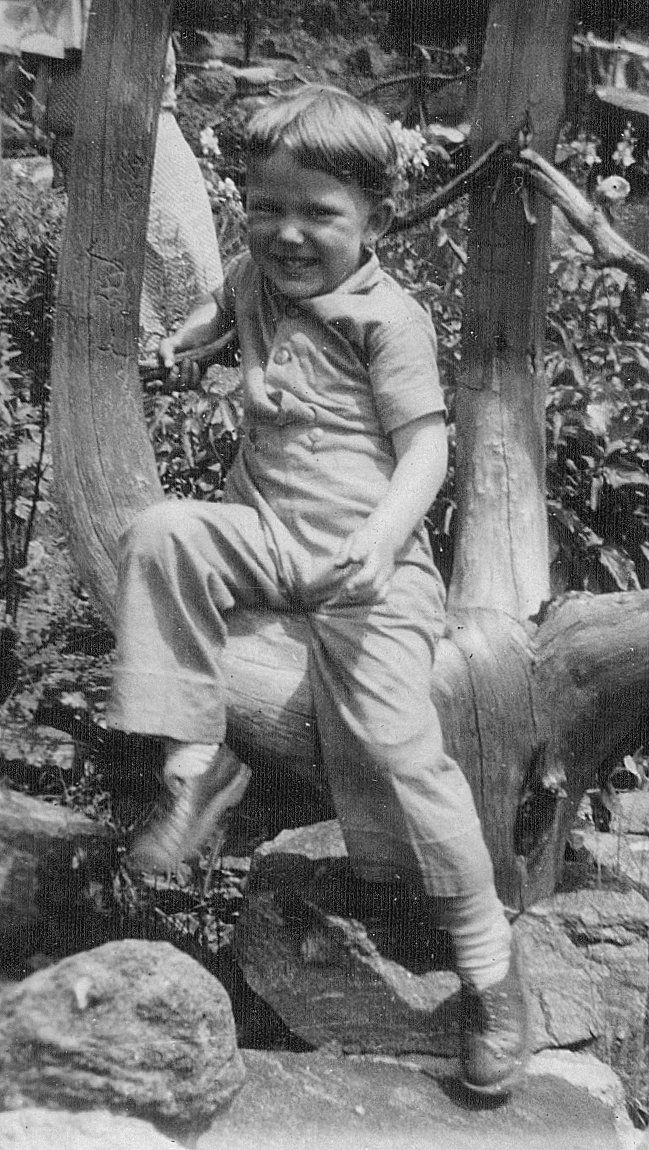
Uncle John

Uncle John, Aunt Irene, Dad
Dad loved sports and played hockey and baseball. He bowled and curled too. During a baseball game, he was hit with a bat on his upper lip and it split open. He wore that scar proudly to the end of his days.
Dad left school before he turned 16, lied about his age, and joined the Canadian Steamship Lines (CSL). He worked on lakers as they were called (ships that ran through the Great Lakes) for CSL from 1944 - 1949. He worked at this from spring until fall each year and when the lakers stopped running over the winter, he worked as a logger.
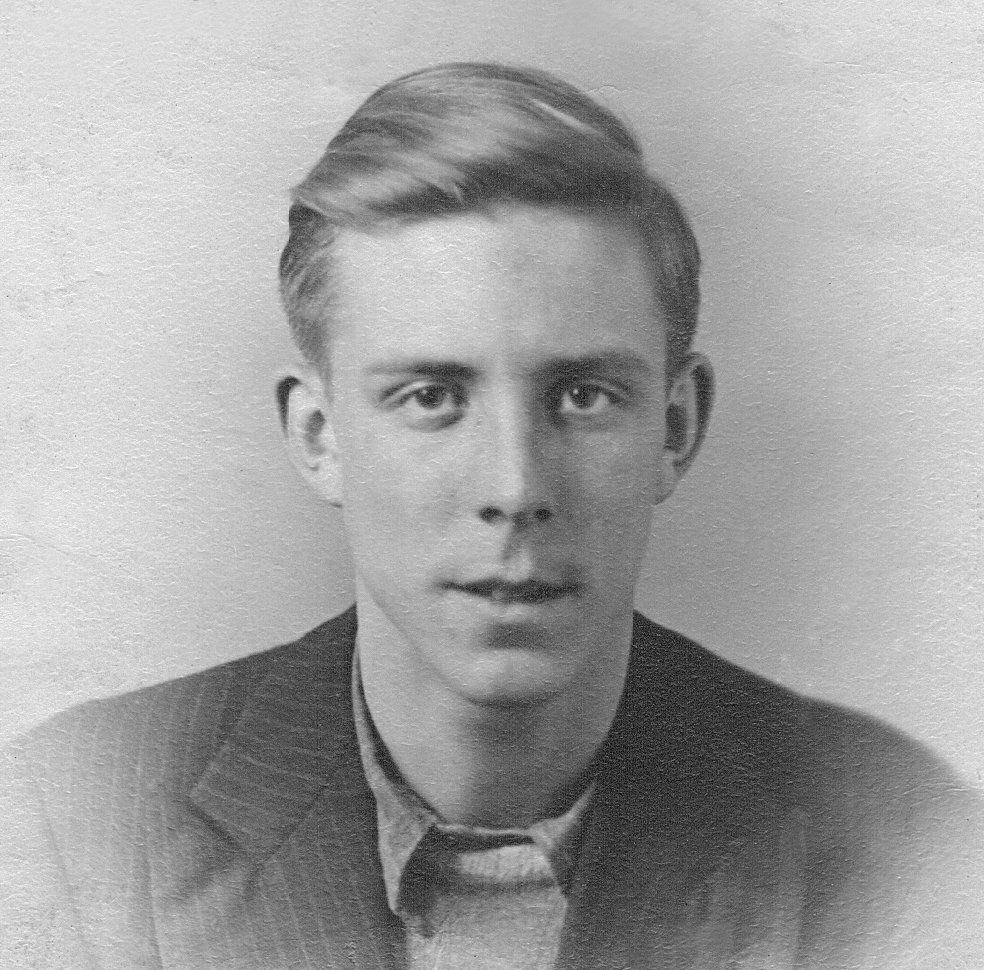
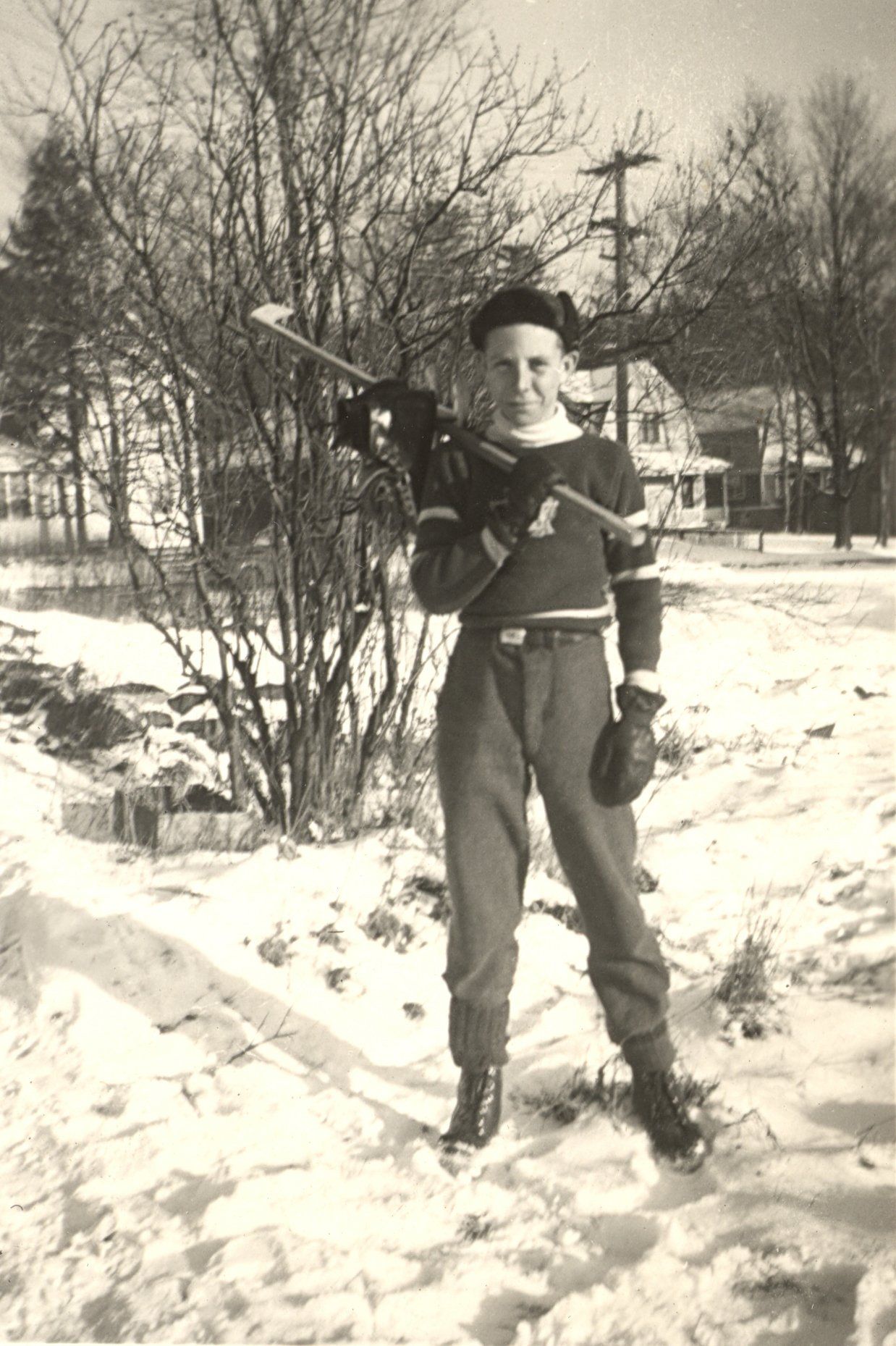
As a Regular Seaman, Dad's first run was from Montreal to Kingston through locks 21 or 22 on the St. Lawrence River. He unloaded grain in the elevators. His first captain was Billy Hoar from Owen Sound. His second ship was called the "Collingwood" and his tour then extended from Quebec City to what was then known as the Lakehead - Port Arthur and Fort William, but known today as Thunder Bay. Dad loved being on the water as you can see from the photos below.
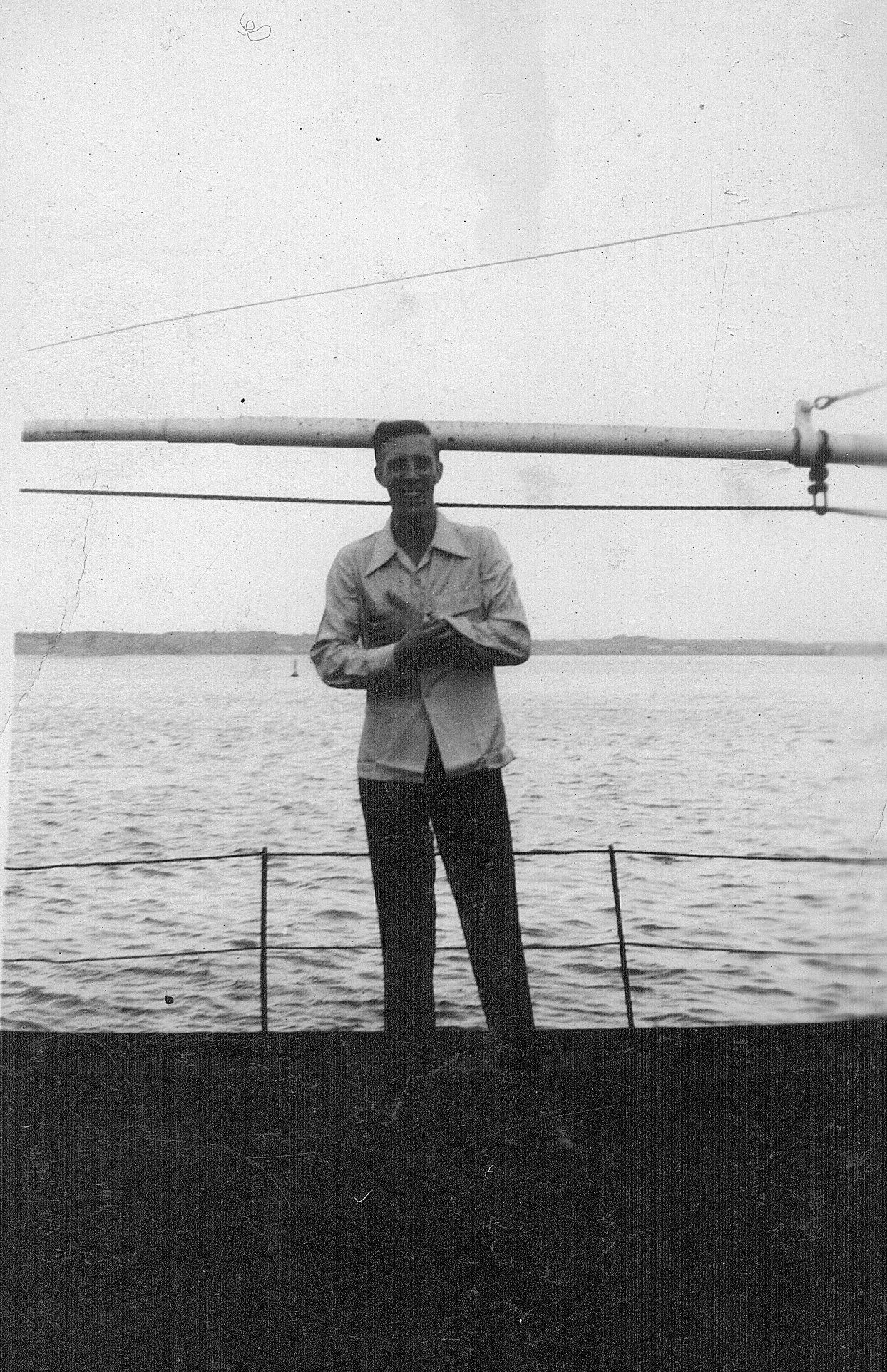
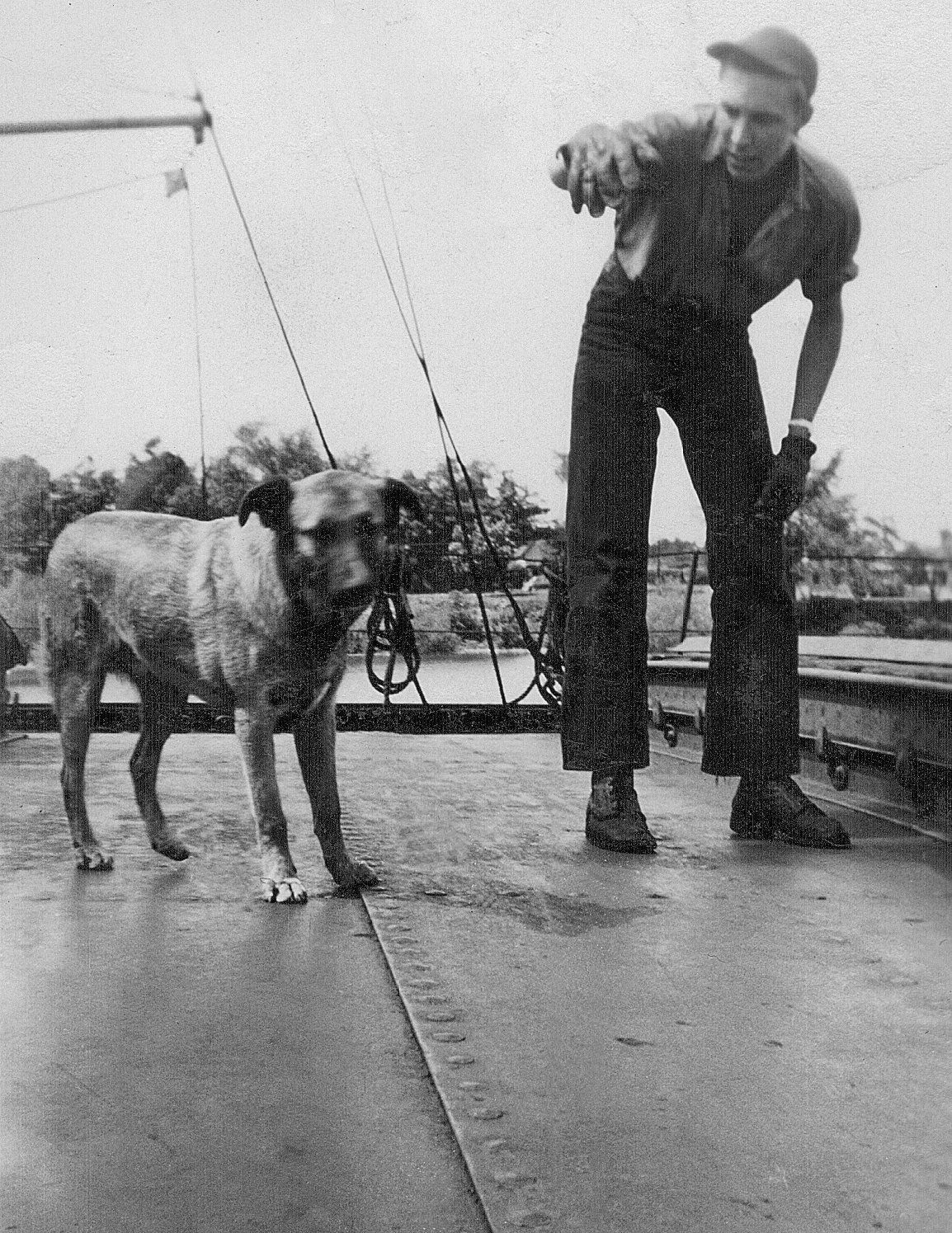
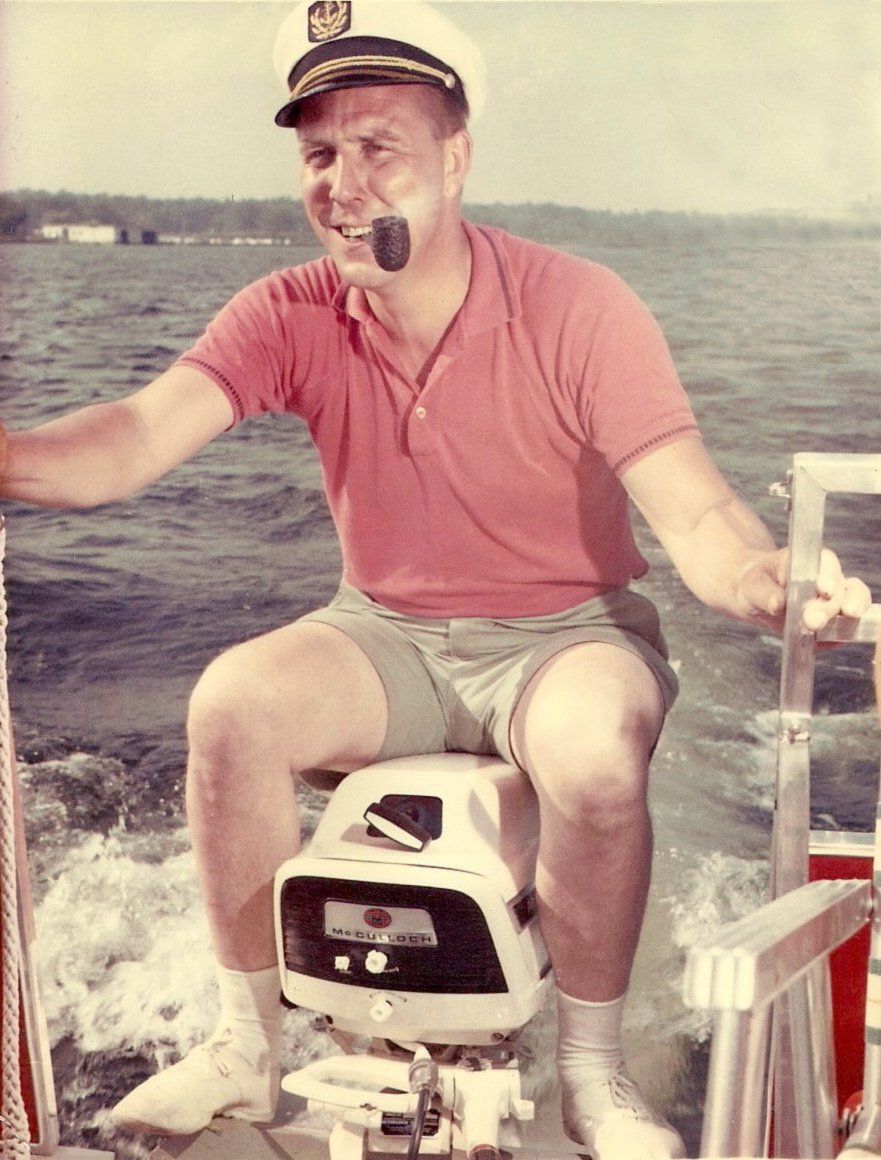
Dad married Mom, Margaret Patricia Hilton, in September of 1949. Dad's cousin, Charles Poytress, known to us all as Chuck, was the best man. Aunt Irene was the bride’s maid and she and Mom remained lifelong friends. In 2009, my husband and I took Mom and Aunt Irene on “Rick, Leanne, Margaret and Irene’s Down East Adventure" - a trip to Nova Scotia and Newfoundland. It was a fun-filled three weeks with two crackerjack older ladies! They always knew how to have a good time.
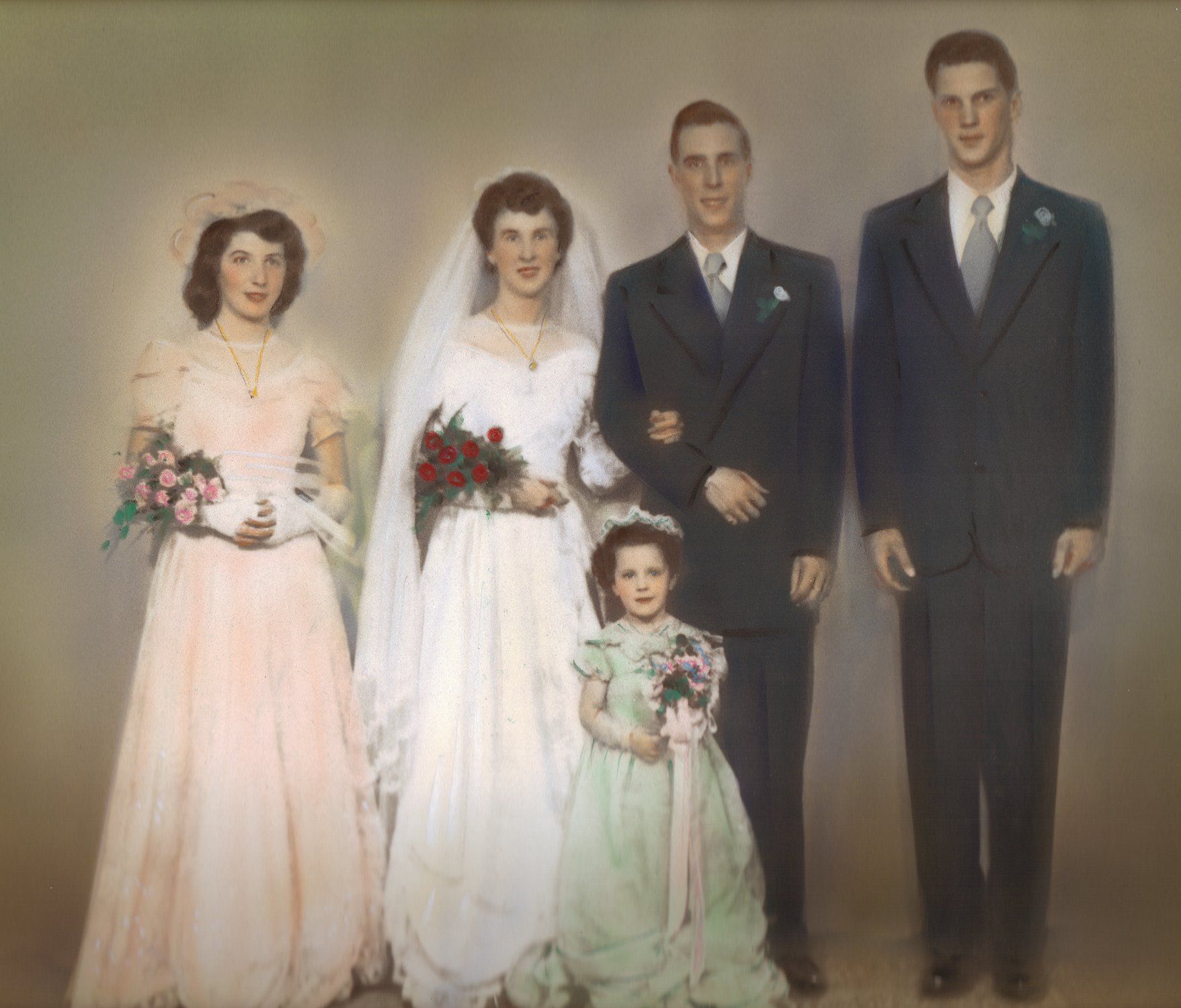
L-R Aunt Irene, Mom, Dad, Chuck Poytress, and the flower girl was Mickey Brint
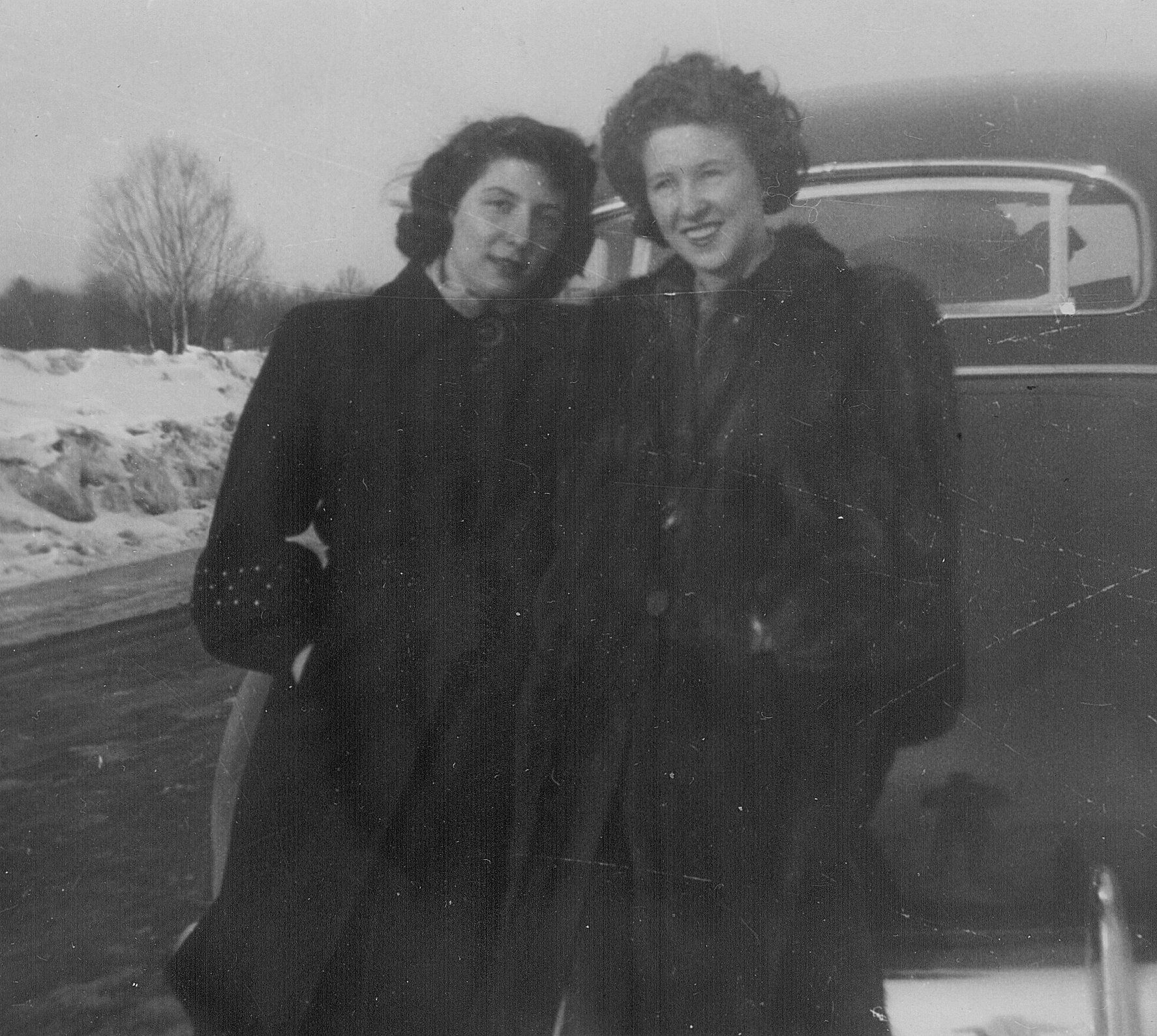
Aunt Irene and Mom
After Dad married, he stopped sailing on the Great Lakes. He worked at McKinley's Hardware Store and Mom worked at the F.D. Fox Company across the street as a clerk. By 1950, Mom and Dad were living in an apartment over Adams Ladies Wear on James Street in Parry Sound. They only lived there for about six months and then moved to Nobel.

Art Prosser, Harold Prosser, Frank Prosser
holding me, Leanne Prosser
Dad became a dad when I was born in 1952. Here is a four-generation photo I have always treasured. It was taken in Keswick in 1953, the day I was taken to meet my great grandfather, Frank Prosser.
Sadly, our Prosser branch headed by my grandfather has "daughtered out" as both my dad and my uncle John only had daughters. My Aunt Irene had a daughter and two sons but, of course, they do not carry the Prosser name. Poppa's brother, Leo, also only had daughters so that line has "daughtered out" as well. Luckily there are still other Prossers from the Frank Prosser line to carry on the family name.
From late 1951 to 1959, Dad worked for A.V. Roe which had a facility in Malton, Avro Aircraft, and a testing facility in Nobel, Orenda Engines. The Iroquois engine was developed at Orenda and became the final engine for the famous Avro Arrow aircraft - famous in that it was the perfect aircraft that never got built. The Iroquois engine was the first engine believed to be capable of reaching Mach 2 and beyond but the Avro Arrow program was cancelled before the aircraft in which the engine had been installed could have a test flight. Test Version 203 was the last aircraft in this program to fly in January of 1959. A replica of this interceptor aircraft is now on display at the Edenvale Aerodrome. It looks sleek enough and modern enough to fly today!
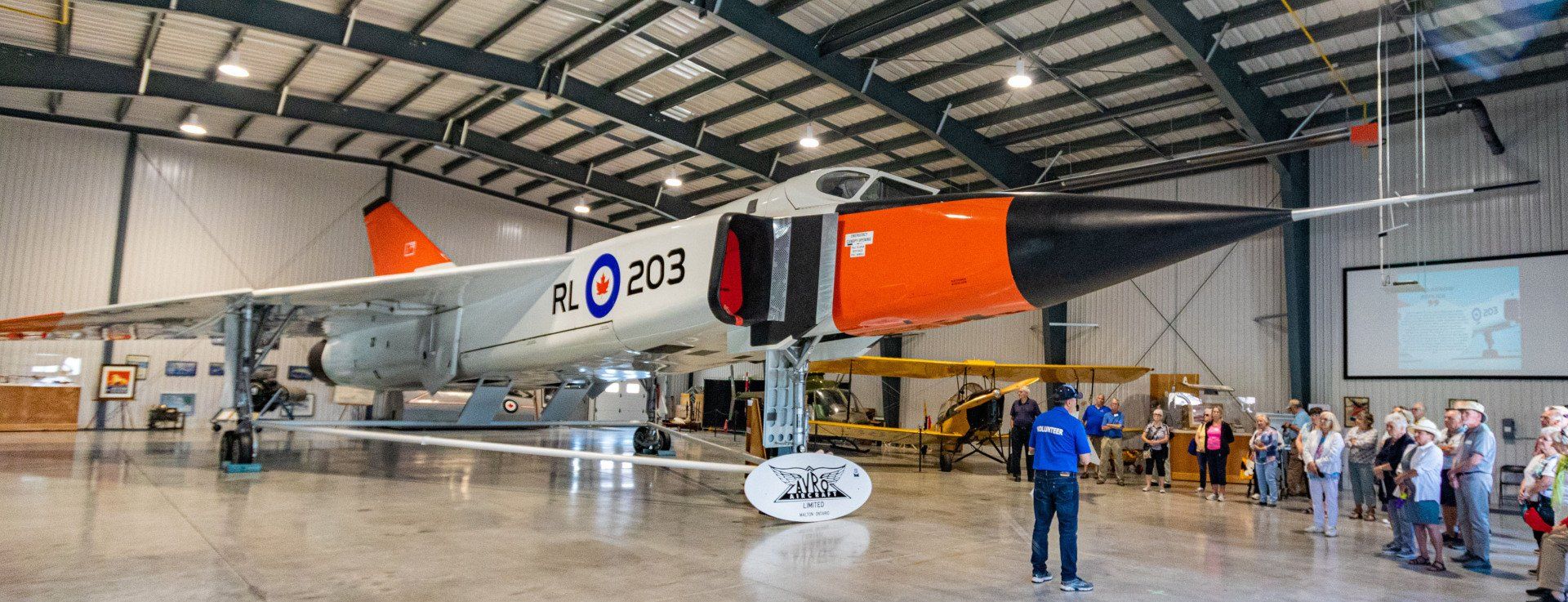
Replica Avro Arrow ~ Photo courtesy of Richard Lamoureux and the Edenvale Aerodrome, 2022
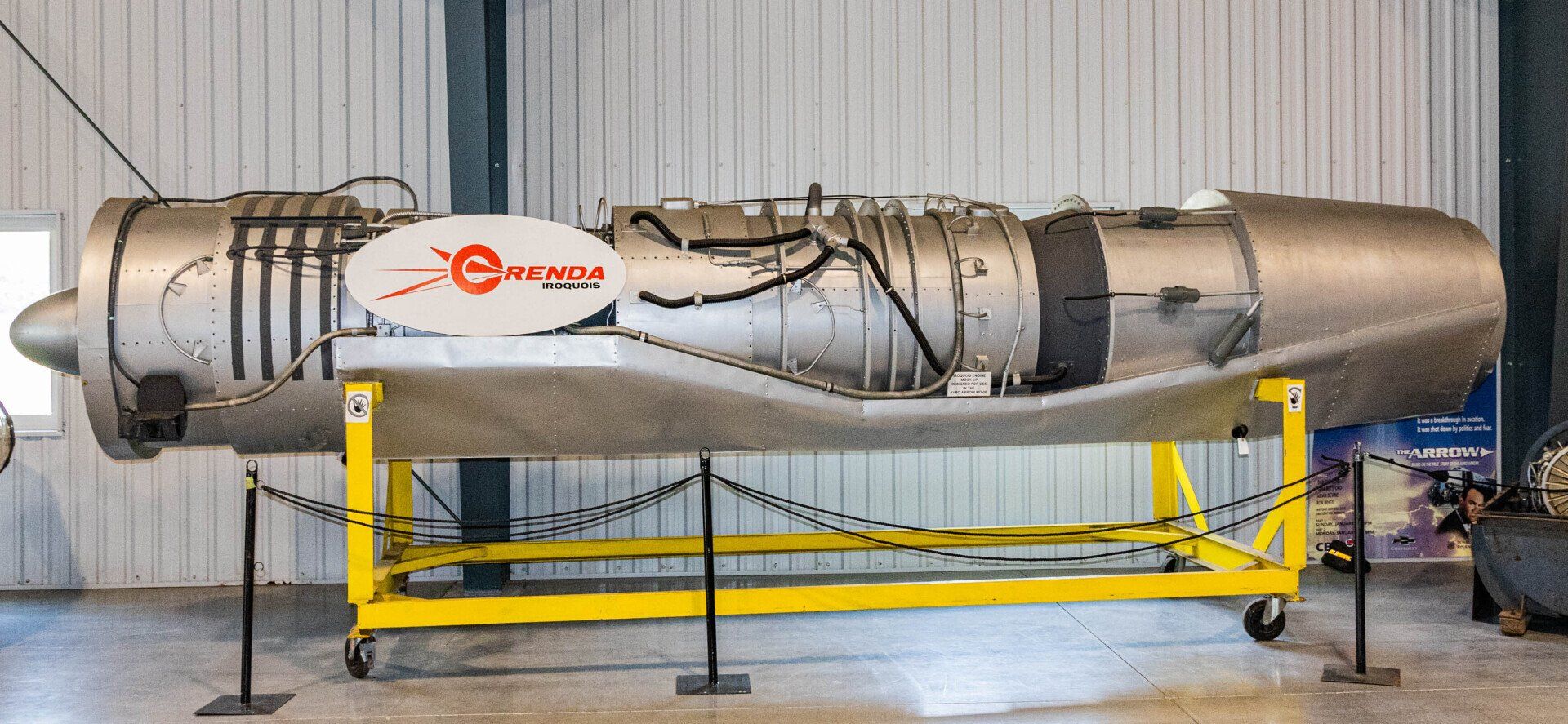
Replica Iroquois Engine ~ Photo courtesy of Richard Lamoureux and the Edenvale Aerodrome, 2022
Here is a snippit from Wikipedia that I found years ago, which appears to be correct, though dated:
The Avro Canada CF-105 Arrow was a delta-wing interceptor aircraft, designed and built by Avro Aircraft Limited (Canada) in Malton, Ontario, Canada, as the culmination of a design study that began in 1953. Considered to be both an advanced technical and aerodynamic achievement for the Canadian aviation industry, the CF-105 held the promise of Mach 2 speeds at 50,000 ft+ altitude, and was intended to serve as the Royal Canadian Air Force's interceptor for the 1960s and beyond.
Following the start of its flight test program in 1958, the Arrow, and its accompanying Orenda Iroquois jet engine program, were abruptly cancelled in 1959, sparking a long and bitter political debate. The Arrow is still the subject of controversy, almost 50 years after it was cancelled.
In the photo below, taken on the shop room floor of the test building in Nobel, Dad is number 23. He worked as a fitter-tester, his last project being the Iroquois engine. He also told me about how they worked on developing hovering ability by drilling holes in a piece of plywood and then using fans to get lift. It took them forever to get it to work. The hovercraft had not yet been invented!
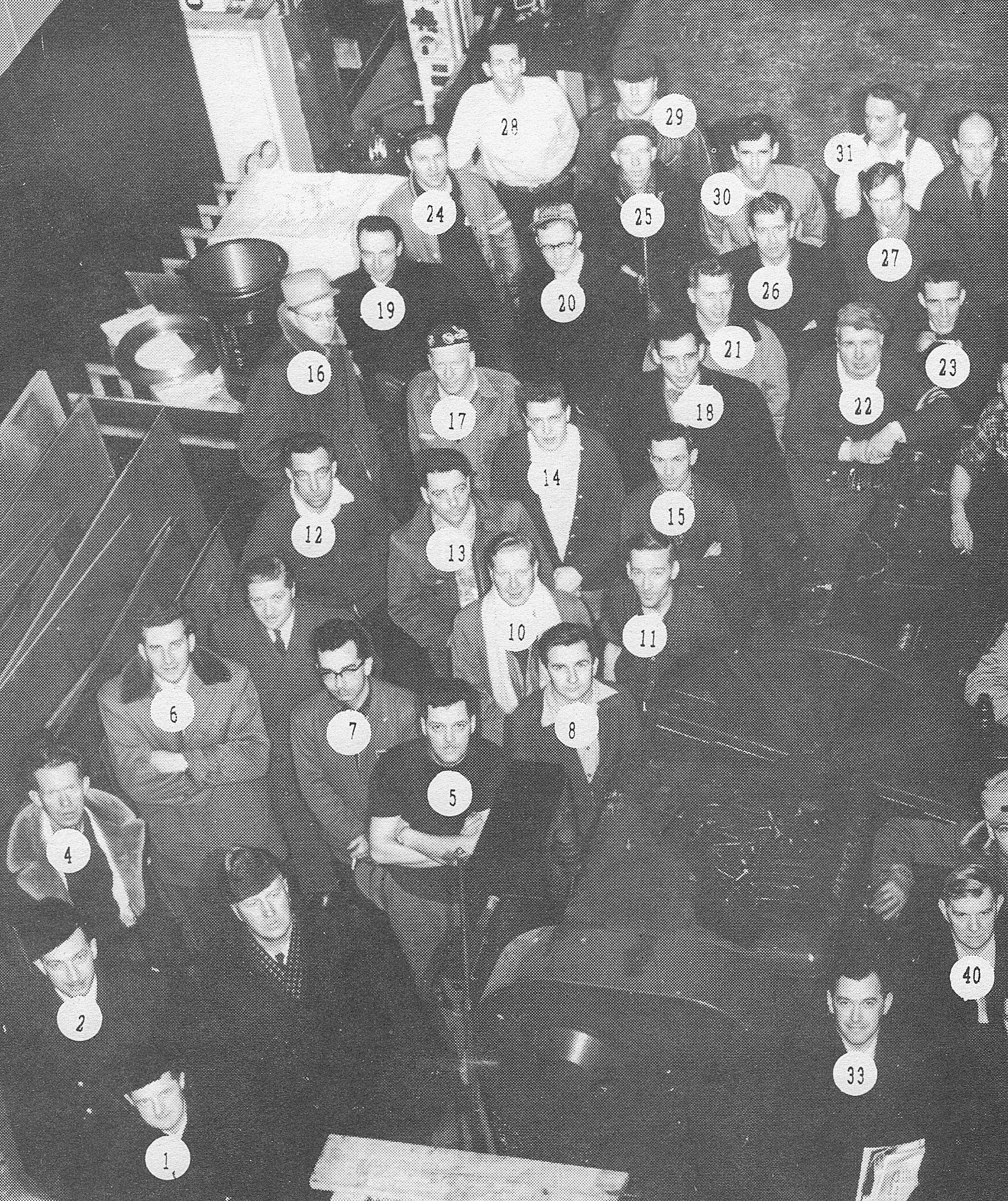
Photo from page 88 of the book “History of the Orenda Test Establishment at Nobel” by John L. Armstrong
Dad and Mom lived in Nobel when I was born. This was a small hamlet just north of Parry Sound. Originally, a train station and village named Ambo had existed at this location prior to 1912. It was renamed Nobel after Alfred Nobel, founder of the high explosives industry. The factory there functioned as British Cordite in WWI and Defense Industries Limited (DIL) during WWII. We lived in a fourplex apartment, 129A Sandhurst Drive. The village itself consisted of multiple fourplexes, among other housing options, and a community centre. None of this village stands today. It has returned to the wilderness it once was, although I am sure there are some environmental concerns that haven't been addressed!
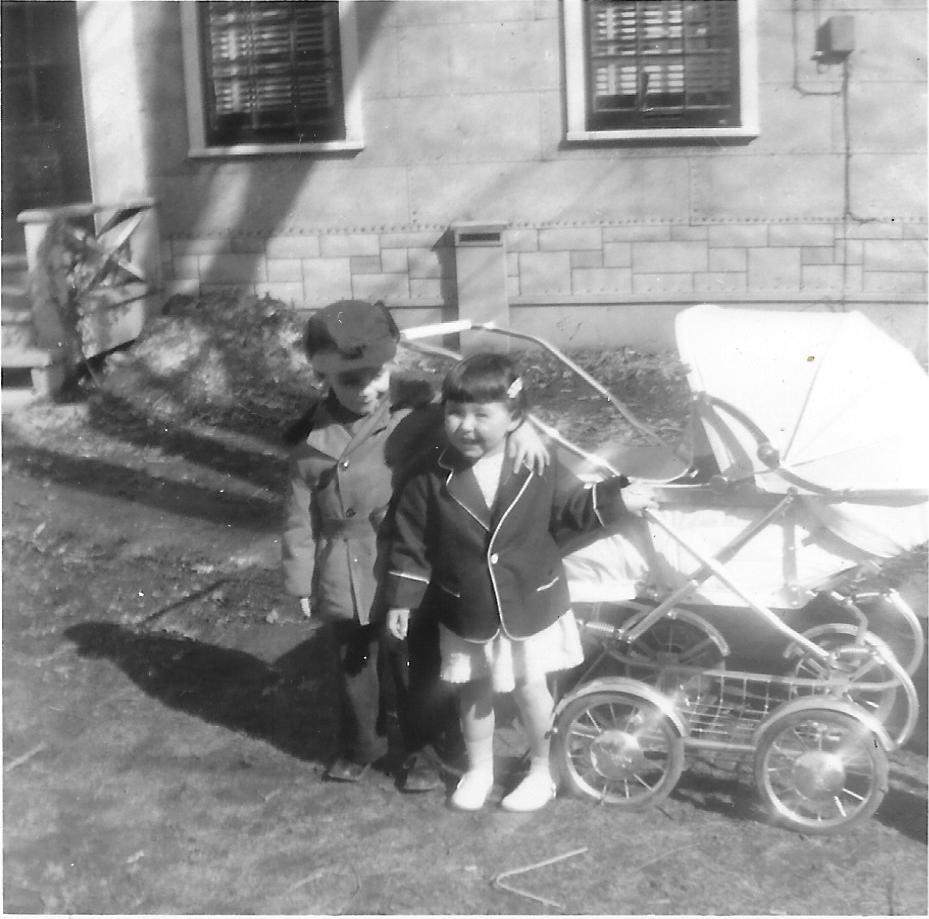
Leanne and a friend in front of the
apartment on Sandhurst Drive
The workers at Orenda Engines turned their little village into a real community. They had lots of activities at the community centre. Dad was part of a musical group called the Nobelmen. They would play on Saturday nights as entertainment at the community centre. Everybody would attend the dances. My parents BOTH loved to dance (and they were very good at it - in fact they met at a dance) but Dad also loved to play in the band. He played drums but he was also pretty good on guitar and harmonica. He had a good voice and loved to entertain people, particularly at his church in his retirement years. One of the last times I visited Dad, he started singing the words to “Big Rock Candy Mountain”. Even at 92 he could hold a tune well and remember the words.
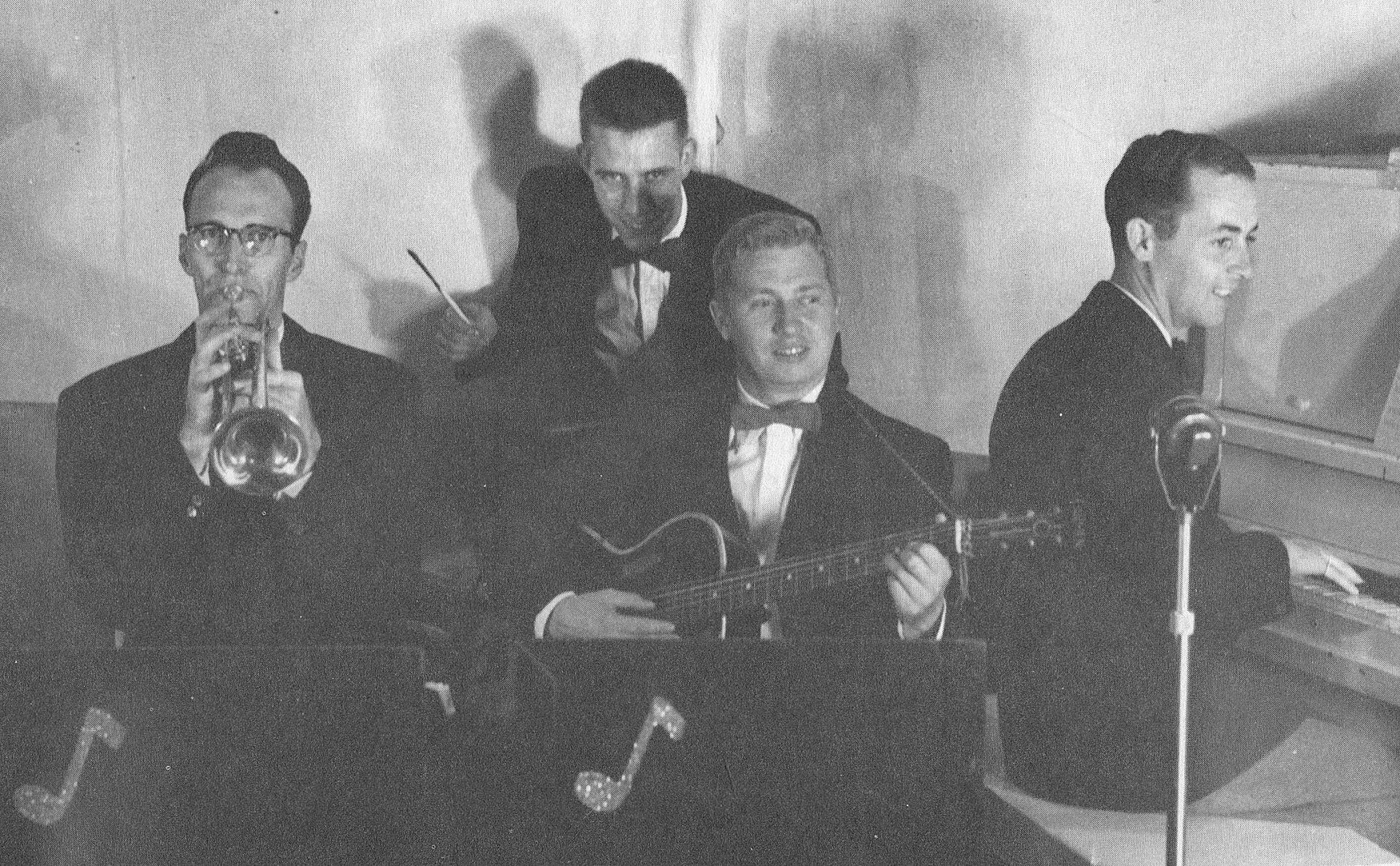
L-R Gord Jennings, Art Prosser, Ken Dunk, Tom Fraser
Photo from “History of the Orenda Test Establishment at Nobel” by John L. Armstrong
The day the Avro Arrow project was cancelled, February 20, 1959, Dad remembers that everyone was called onto the shop room floor at 9:30 in the morning. Everyone was told the bad news all at once over the loud speaker. The Arrow had been cancelled and everyone was to take their lunch boxes and exit the building immediately. It was a sad day for all. Some employees stayed on for a few months to maintain some essential services and complete termination packages, but all the other workers lost their jobs on the spot - and many of them lost their homes as well because the company owned the homes where they lived! Many of the engineers who worked on the Avro Arrow ended up working for NASA or other American companies and some returned to England to work on projects there. What a missed opportunity for Canada!

Termination Memo on wall ~ Photo courtesy of Richard Lamoureux and the Edenvale Aerodrome, 2022
Sometime in late 1956 or early 1957, our family moved from Nobel to Parry Sound and rented a house on Summit Avenue. We were living there when my sister, Kim, was born.
Over the next couple of years, my dad built a three-bedroom bungalow just down the street on Almonte Drive. My sister has an entire carousel of slides showing her “helping” with the build by riding the wheel barrow up and down as Dad laid the foundation for the basement. Thanks to Kim, he certainly built a lot of extra muscle as well during this time!
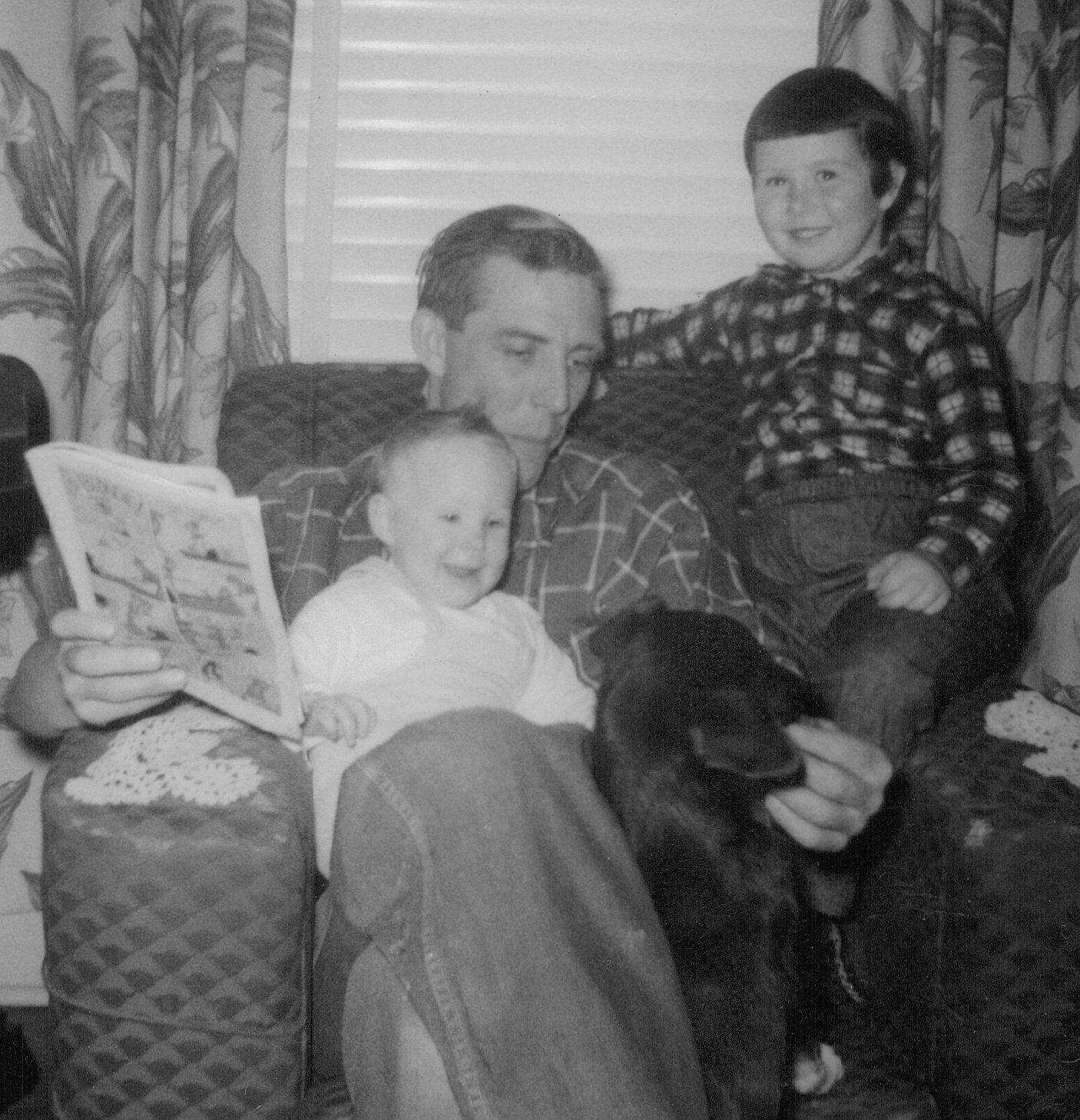
Dad, Kim, me and Bonnie, our dog
Dad loved the outdoors. He loved fishing especially and spent many happy hours devoted to this passion all year long. When Kim and I were very young, Dad owned a small cabin on Pengally Bay accessible only by boat out of Pointe au Baril, just north of Parry Sound. My uncle John and I had a lot of fun at that camp. My sister was just too young to appreciate it.

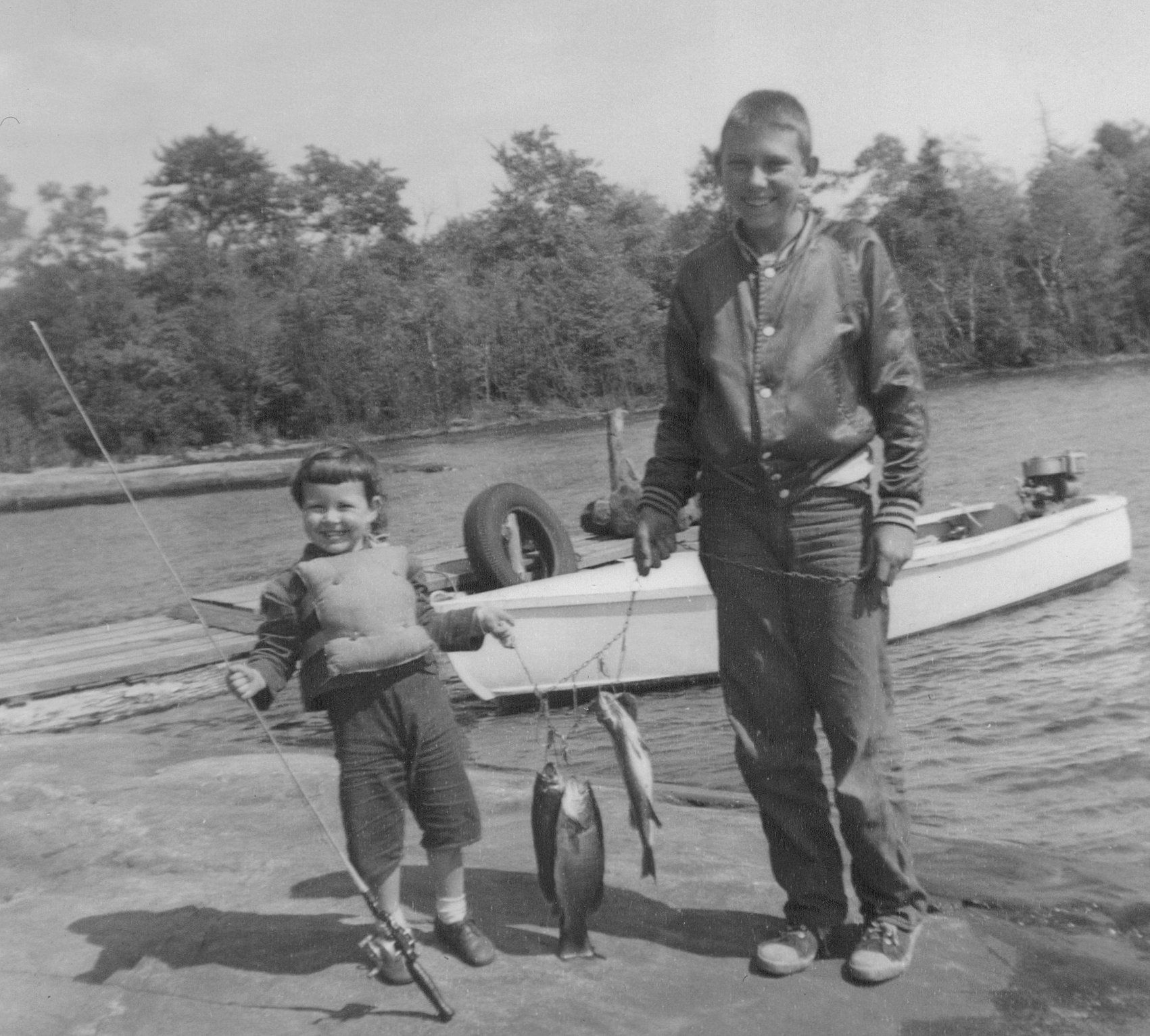
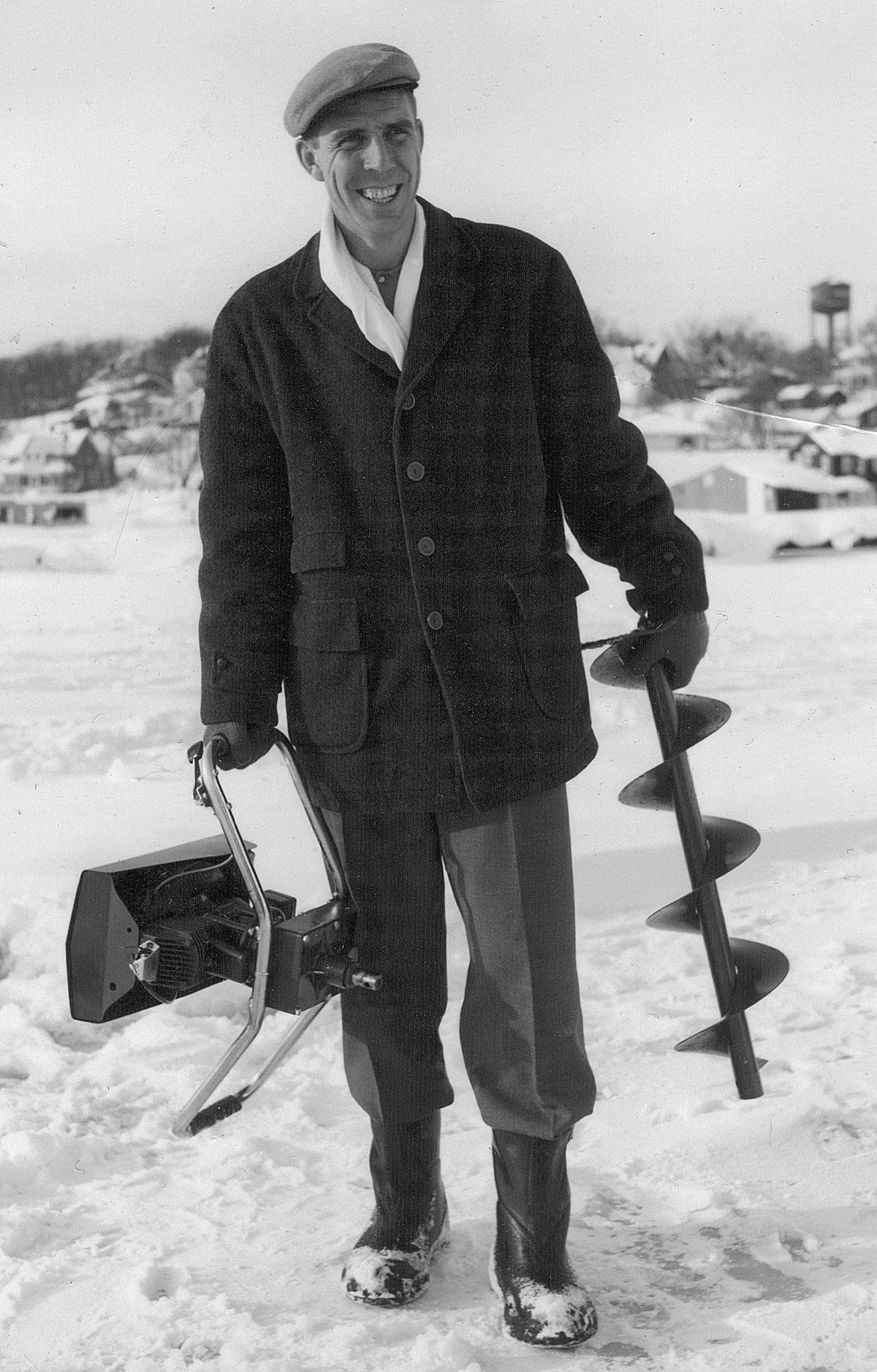
In the early 1960’s, Dad built a family cottage on Kineras Bay, seven miles from Parry Sound and also only accessible by boat. There was one bedroom for Gran, one for Uncle John and Aunt Sharon and one for the four of us. Our family enjoyed many happy times there until my parents divorced. After that, Dad would go up every summer for a week of fun and fishing with a group of friends and his brother, who by then owned the cottage.

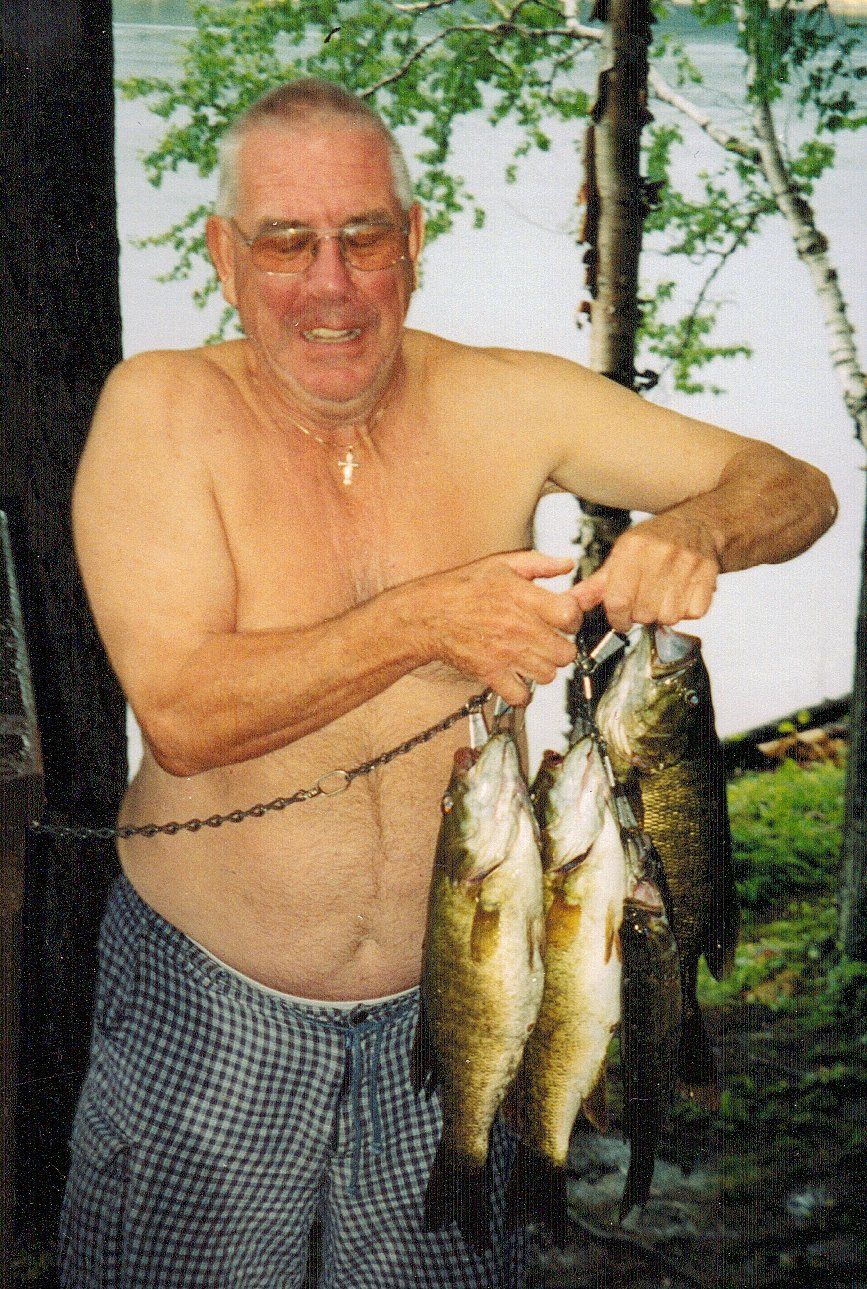
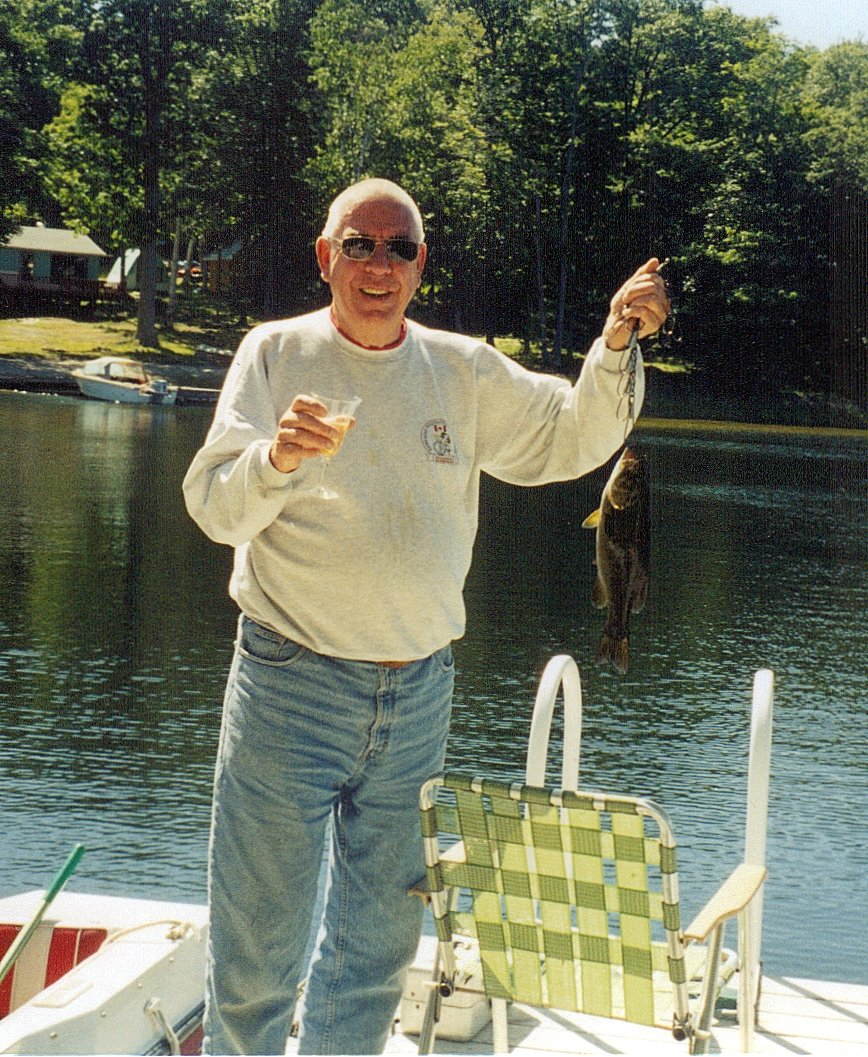
After leaving A.V. Roe, Dad worked at various marinas around Parry Sound. About 1964 or so, he began to work for McCulloch Canada as a sales rep and we ended up moving to Brampton in the summer of 1965. Mom and Dad divorced in 1969 and immediately thereafter, Dad married his second wife, Dorothy Clements.
Dad eventually left McCulloch for Black and Decker and then he retired and moved to Maitland. Rubberset, a paintbrush company with a factory in Gravenhurst, lured Dad out of retirement in the mid 1980's and he moved to Bracebridge. He eventually retired from Rubberset circa 1990, moved to Bobcageon briefly and then moved to St. Catharines after his divorce from his second wife, Dorothy. As Dad had been born in St. Catharines, his move back completed the circle of his life.
A lot of Dad’s retirement years were spent doing woodworking. He had a workshop in the back yard of his home on Morningside and he worked very hard making everything from furniture and recipe boxes to bat houses and mailboxes. His partner of more than ten years, Maree, was a very talented painter and they sold their popular wares at craft shows every year. Dad and Maree shared a very special cross-Canada camping trip with me and my second husband in 2001. We had a lot of fun on that trip!
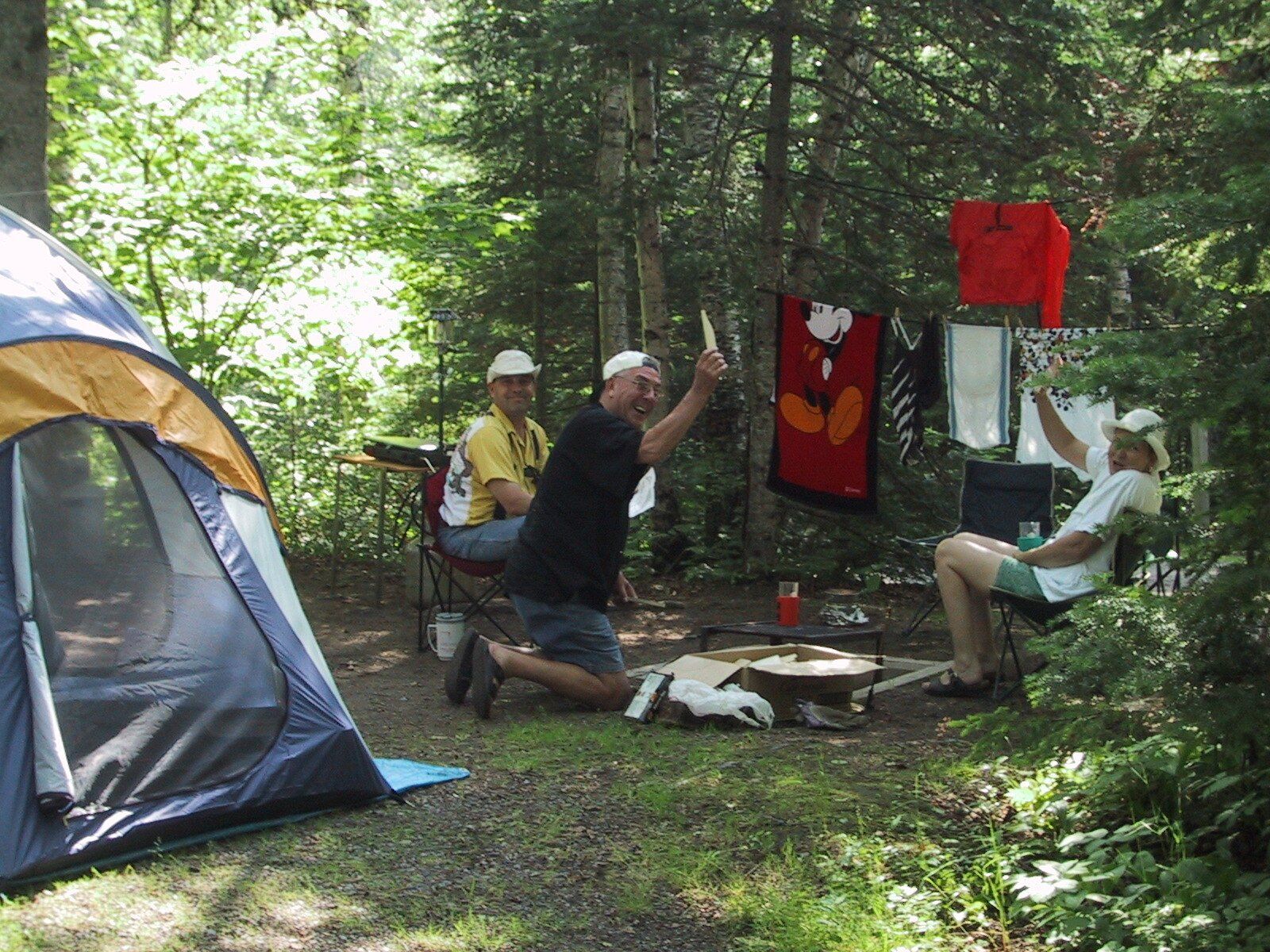
Rainbow Falls Provincial Park, Northern Ontario
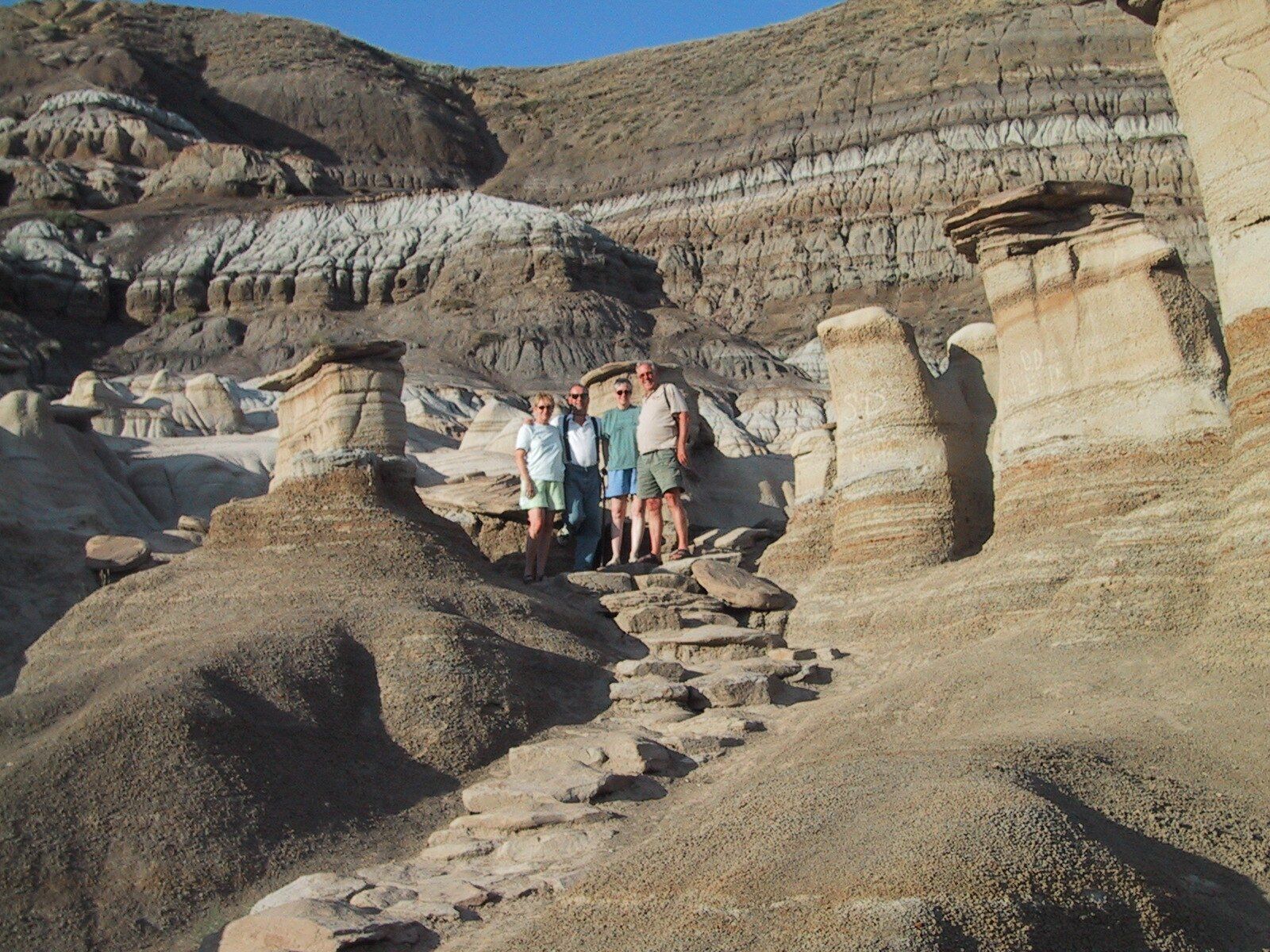
Hoodoos in Drumheller, Alberta
Cribbage was a right of passage in the Prosser family and my dad was a VERY proud member of North America’s oldest cribbage club, The St. Catharines Cribbage League, established in 1921. Dad was a member until COVID-19 shut everything down in 2020. Dad loved to play games and I have learned many different card games from him over the years, from One-Eyed Jacks to Five Crowns. A visit was never complete without an evening of cards. I remember one year getting snowed in during a visit to Dad in St. Catharines. We played non-stop cards for two days! My sister and I continue that tradition to this day. To say we are competitive card players is an understatement.
Dad had no end of hobbies. He was a very keen golfer. He played every summer and loved travelling with his church group to Myrtle Beach each November for a month. He would be out every day, golfing and socializing. Dad LOVED to socialize. He was an active member of St. John's Anglican Church in Port Dalhousie and would always take part in their plays and pub nights. He loved to entertain and make people laugh.
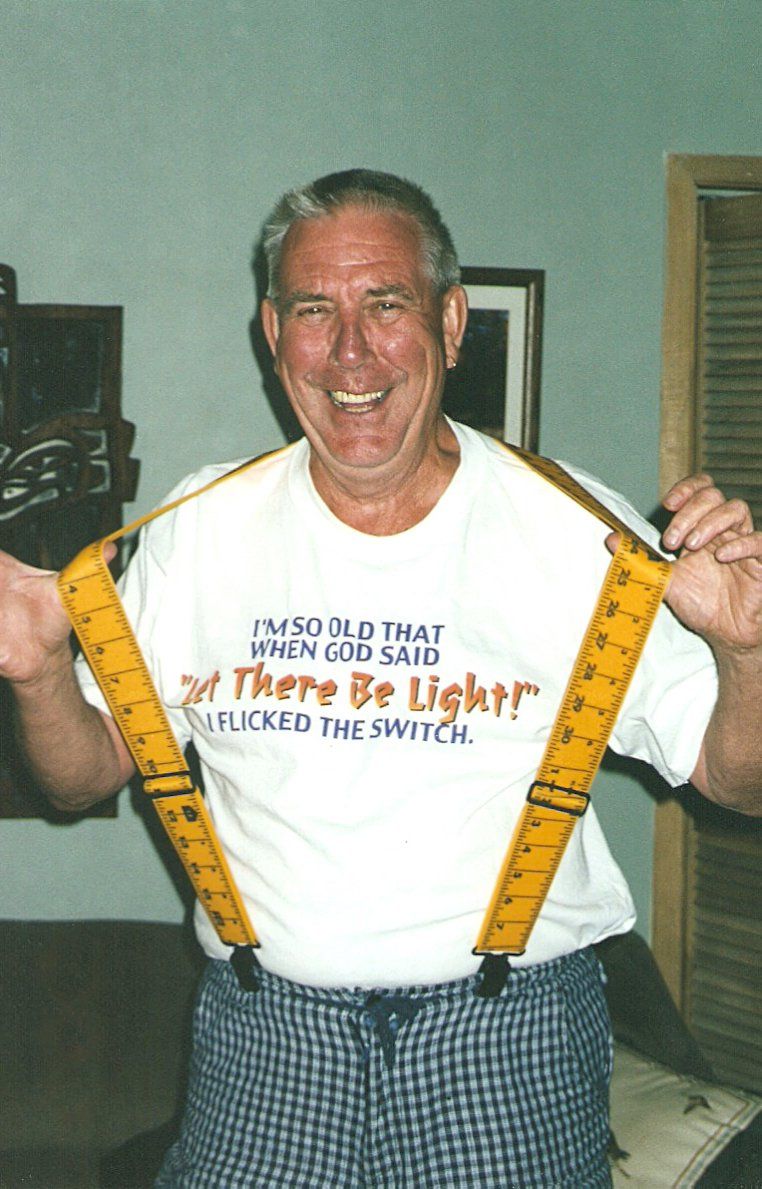
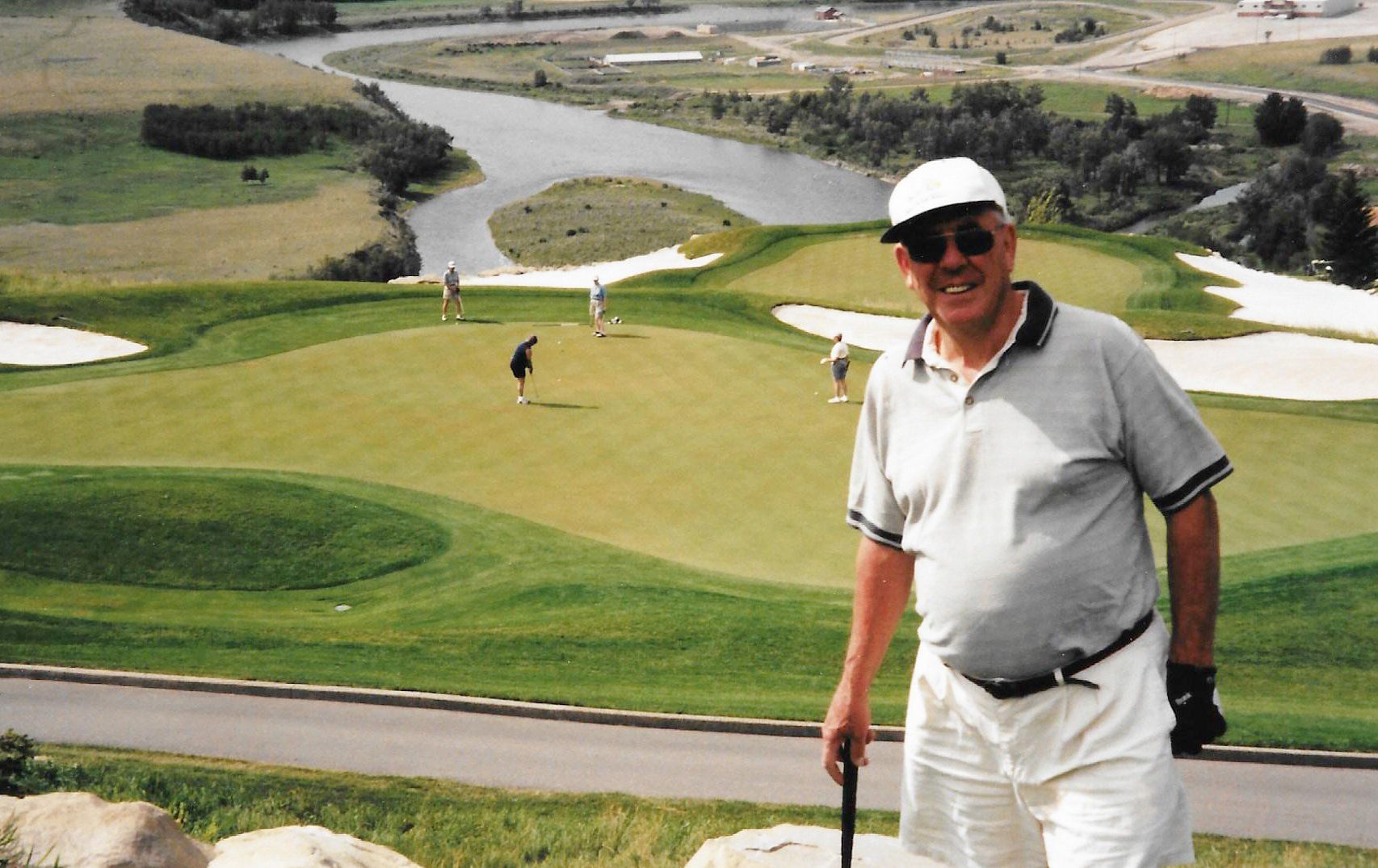
Golfing in Cochrane, Alberta, 2001
Dad’s final home was a retirement home in St. Catharines. His room was adorned with photos of family including his two daughters, three grandchildren and four great grandchildren, all of whom he was so proud. He especially paid homage to his most treasured "best friend”, Martee, his miniature schnauzer, with photos, a painting and memorabilia.
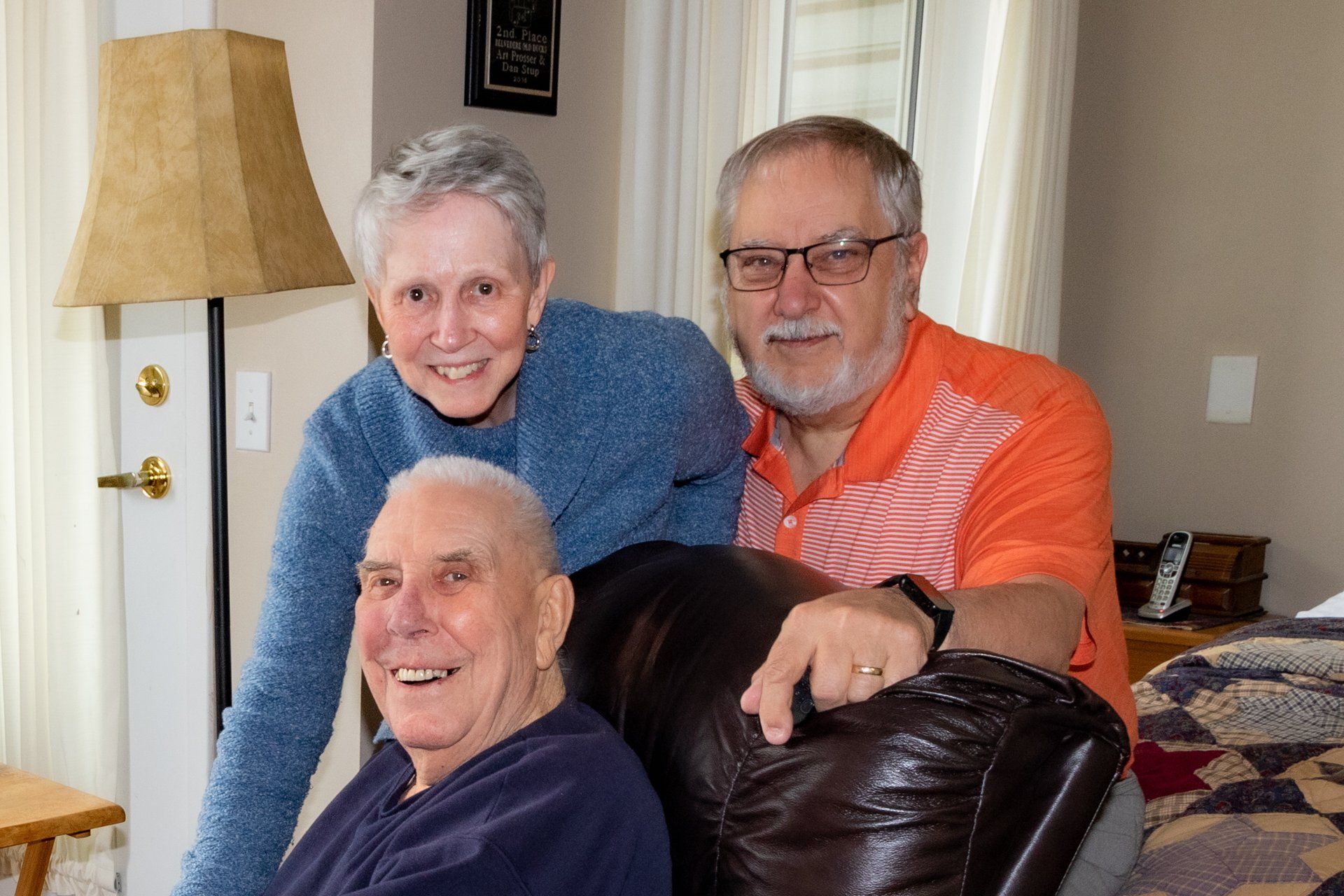
Dad, my husband, Rick, and me,
three weeks before Dad died
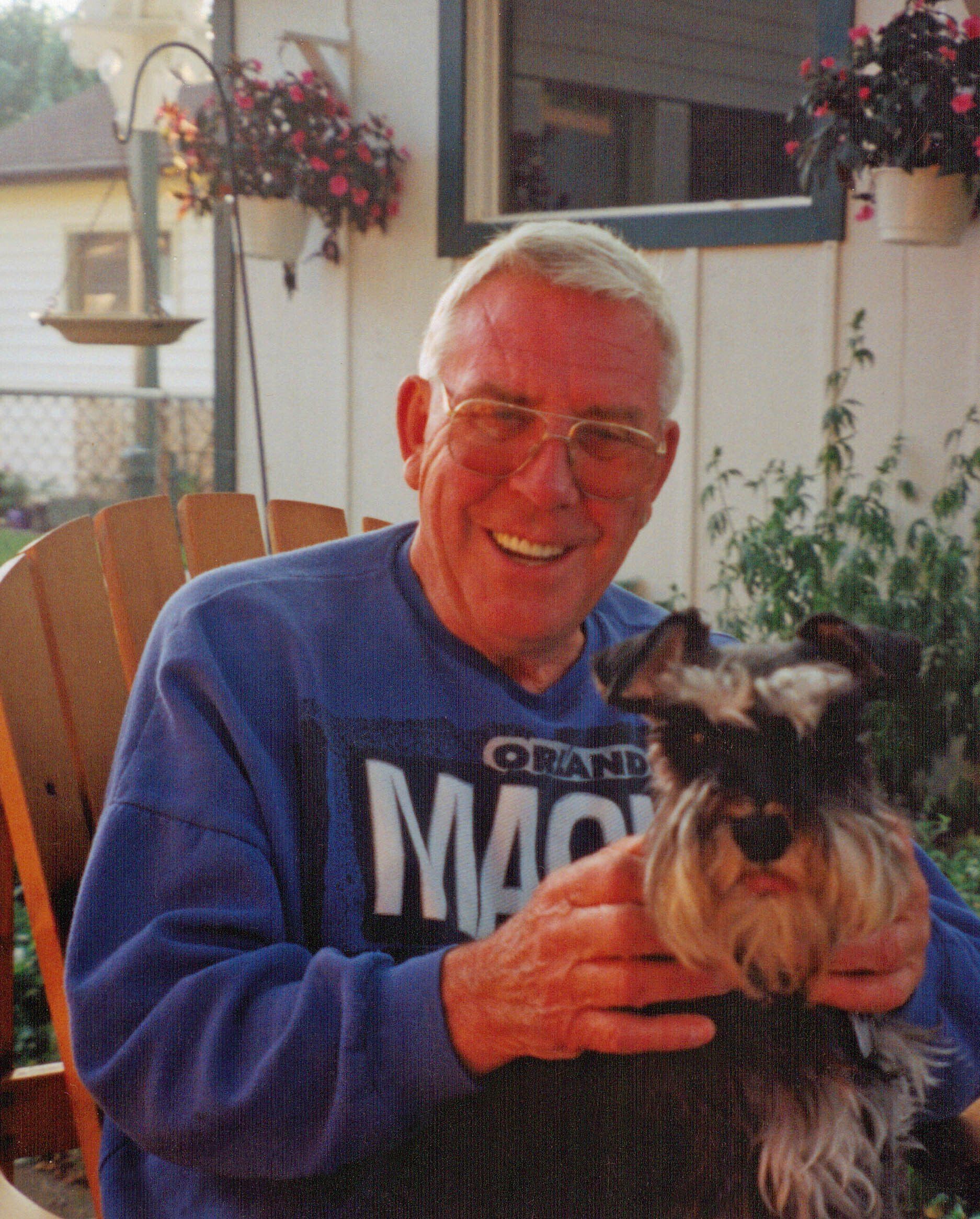
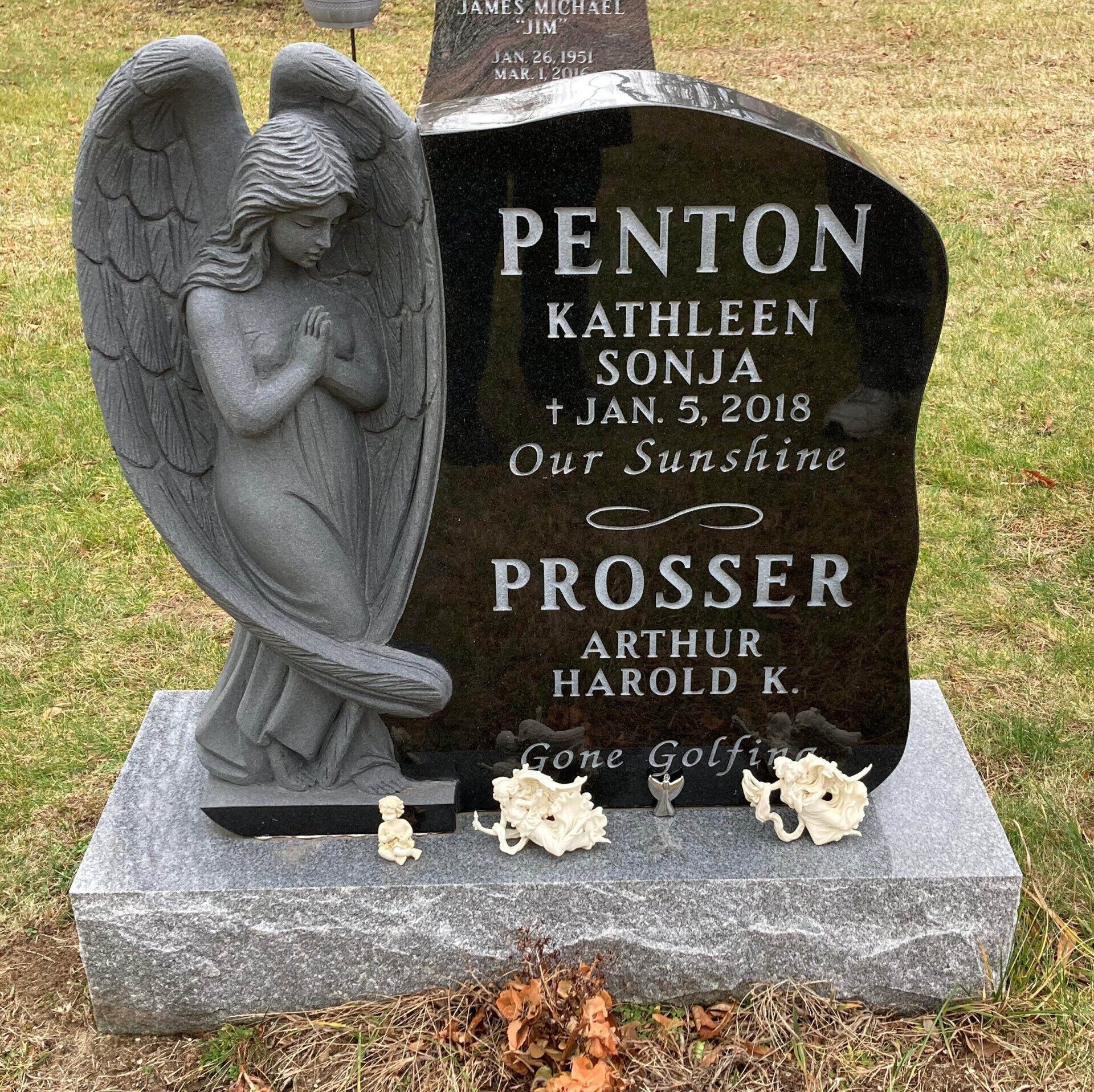
Dad lived life on his own terms and died that way too. He refused to get treatment that would have prolonged his life until it was too late. After the deaths of his partner, my mother, and his second wife, I think Dad just didn’t want to live any longer. He was very isolated during Covid and had lost his zest for life. Dad is buried, as he wished, with his final partner, Kathleen Penton.
At my daughter’s wedding, instead of a toast, Dad sang a song for us all that he used to sing while bouncing my daughter up and down on his foot.
As my daughter and I stood vigil by Dad’s hospital bed at the end, we sang this song for him. I KNOW he loved it.
Nellie ate some oysters an' Nellie ate some ham,
Nellie ate some marmalade an' Nellie ate some jam.
Nellie drank some whiskey an' Nellie drank some beer.
And then Nellie wondered what made her feel so queer.
Uuup come the oysters an' uuup come the ham.
Uuup come the marmalade an' uuup come the jam.
Uuup come the whiskey an' uuup come the beer.
And then Nellie knew what made her feel so queer.
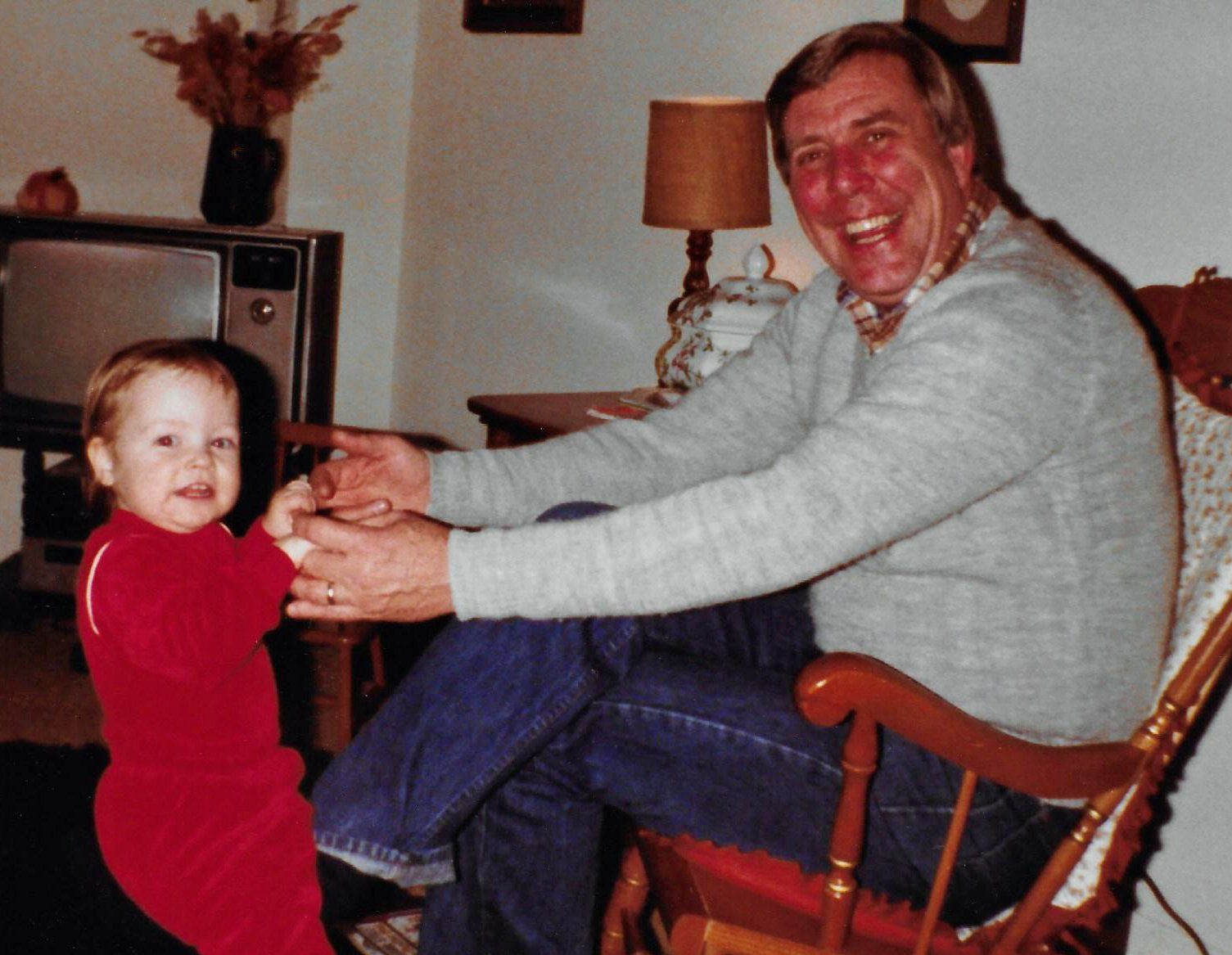
Dad passed away December 10, 2021. Love you, Dad. You lived life big and bold.